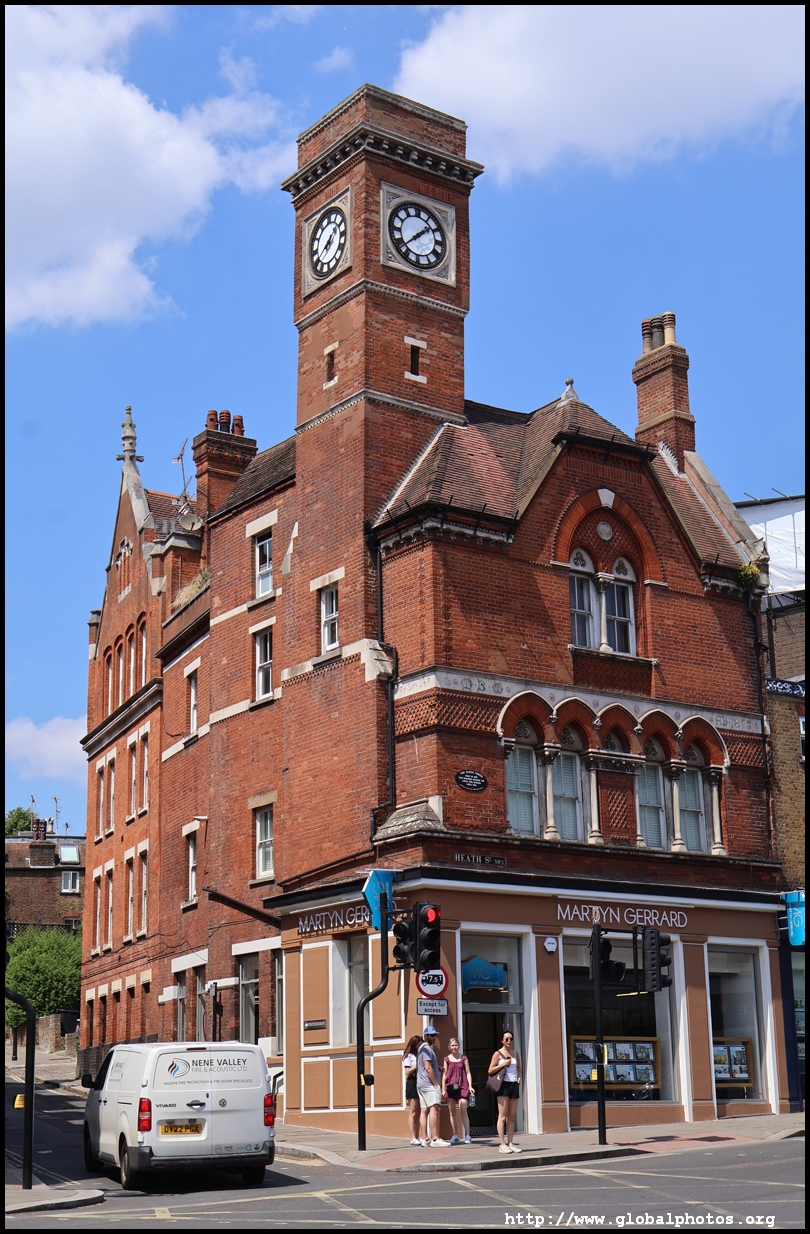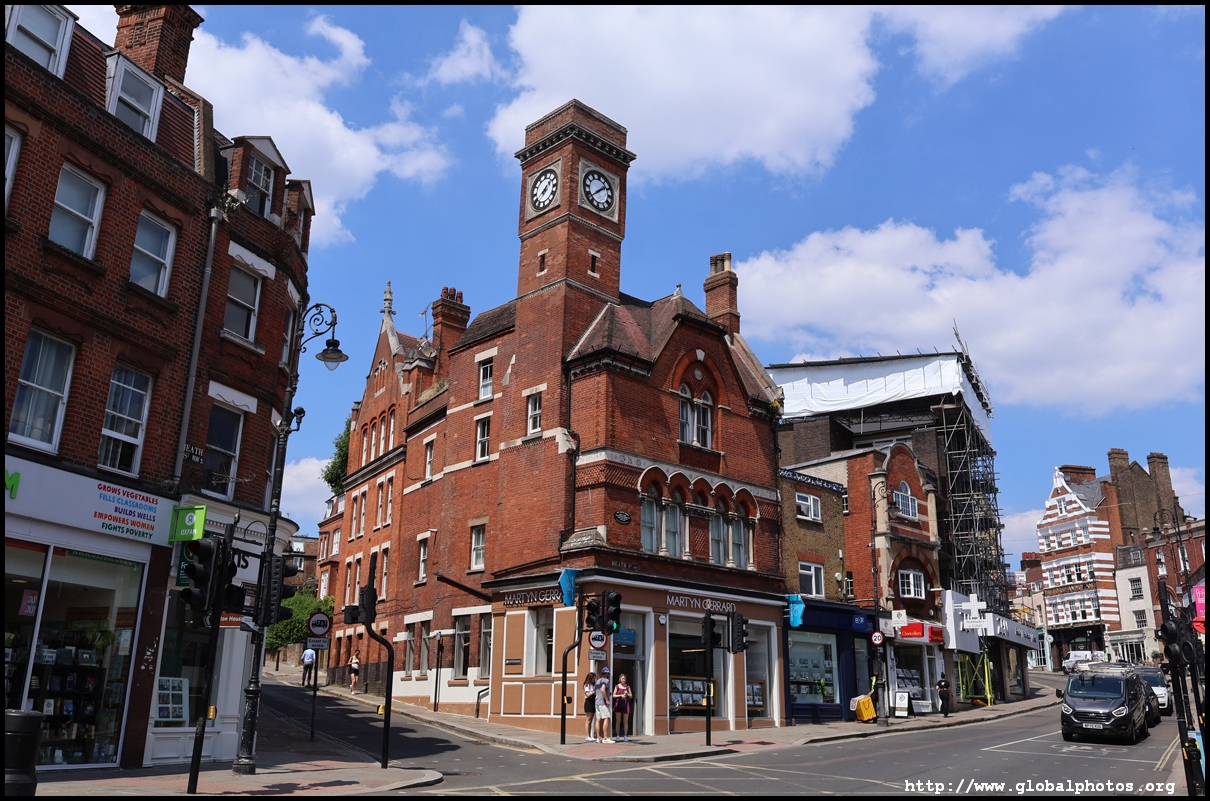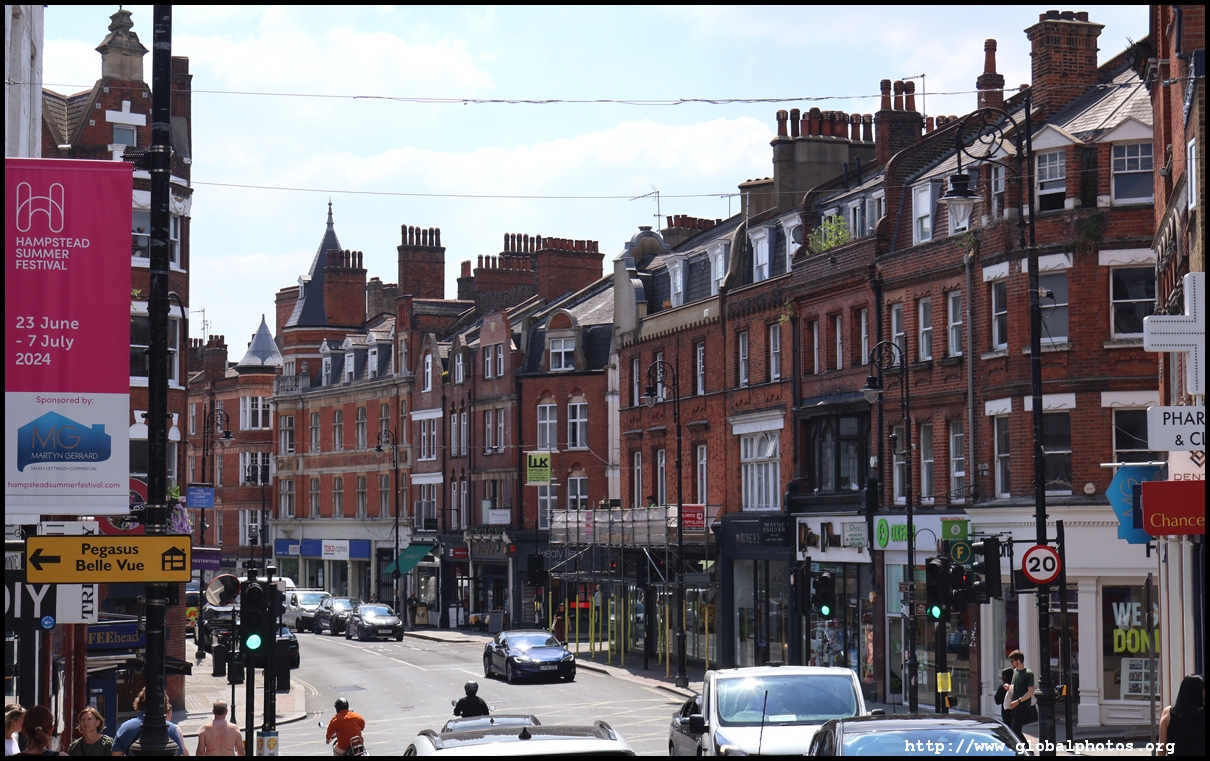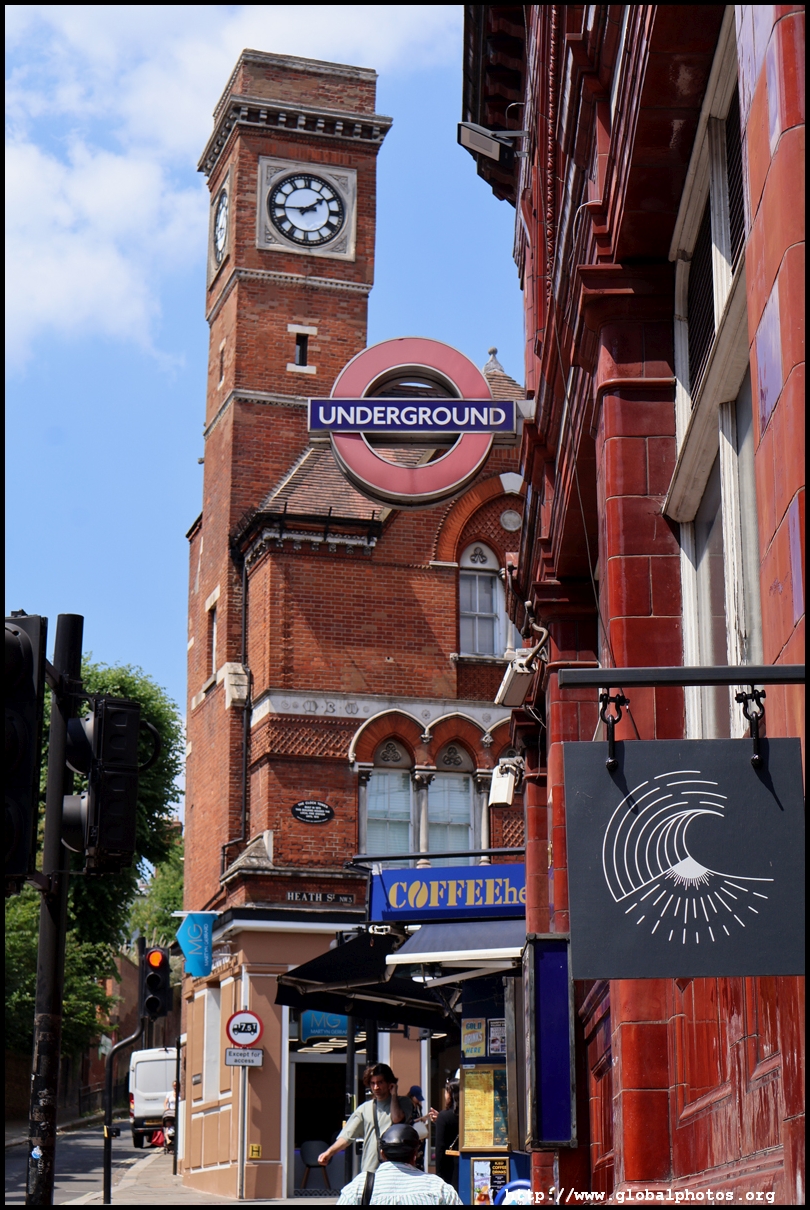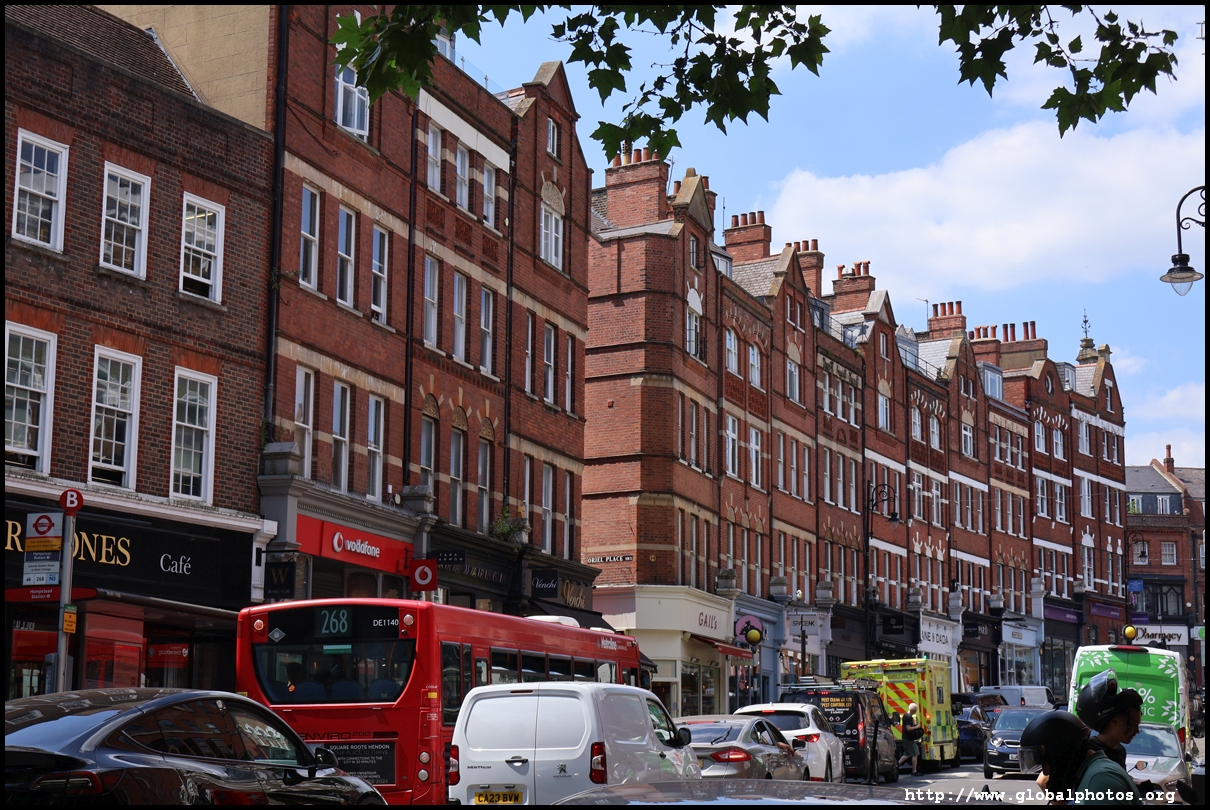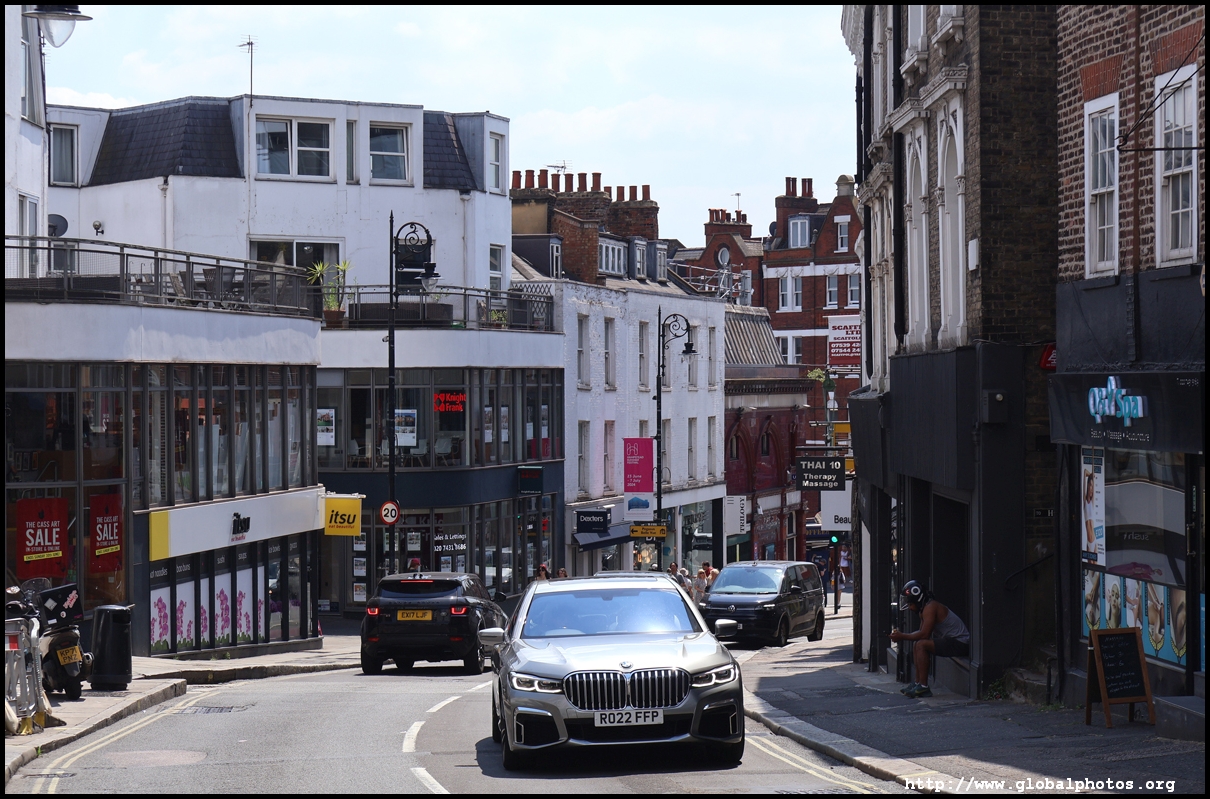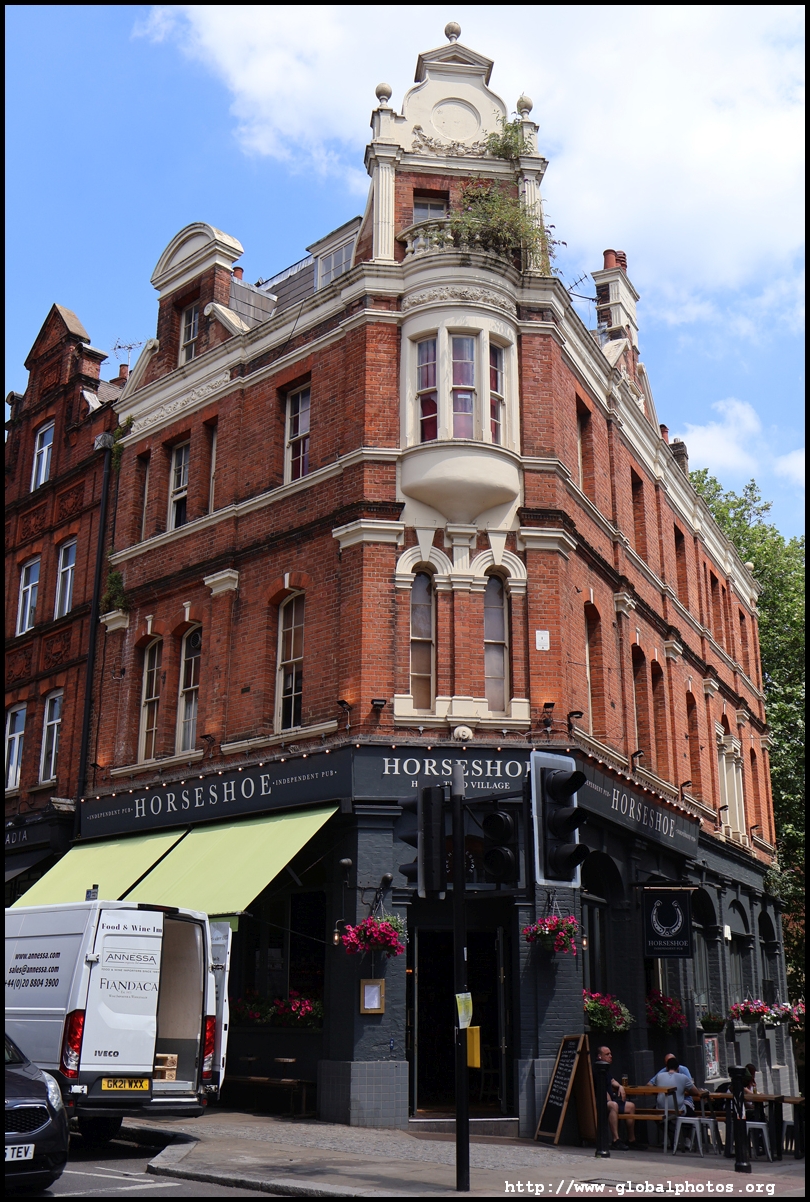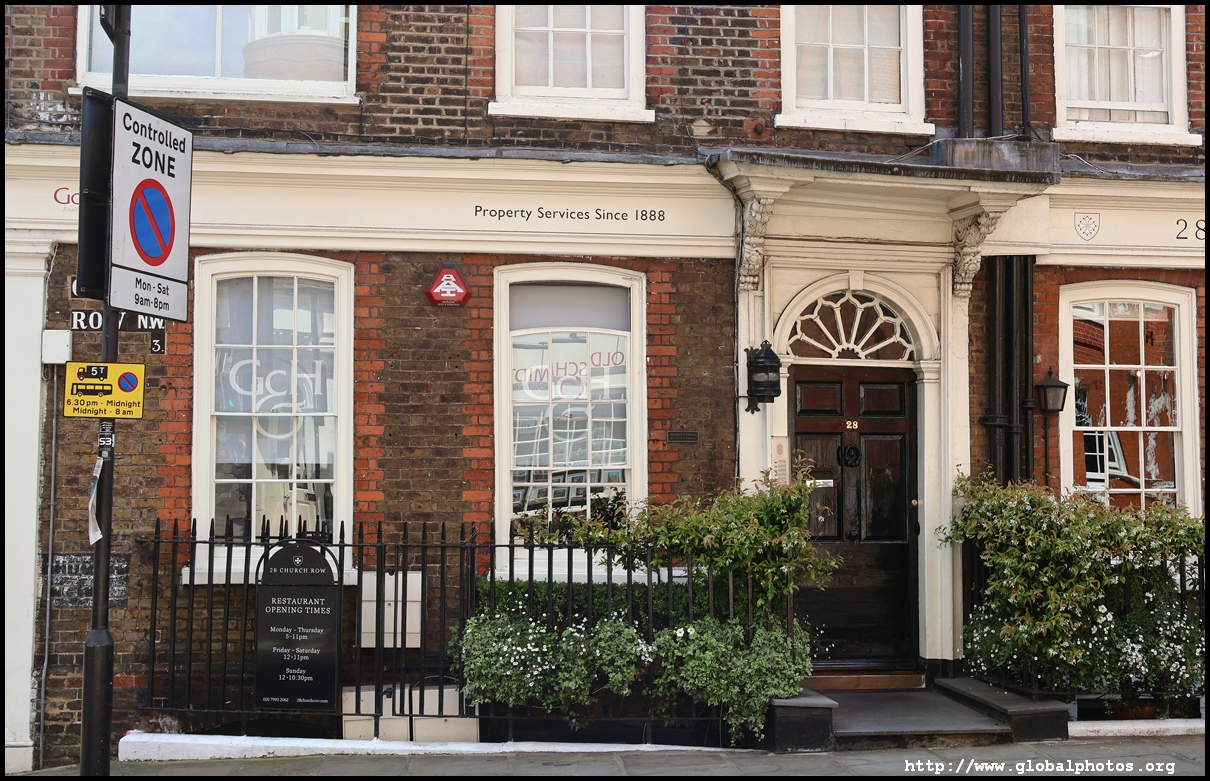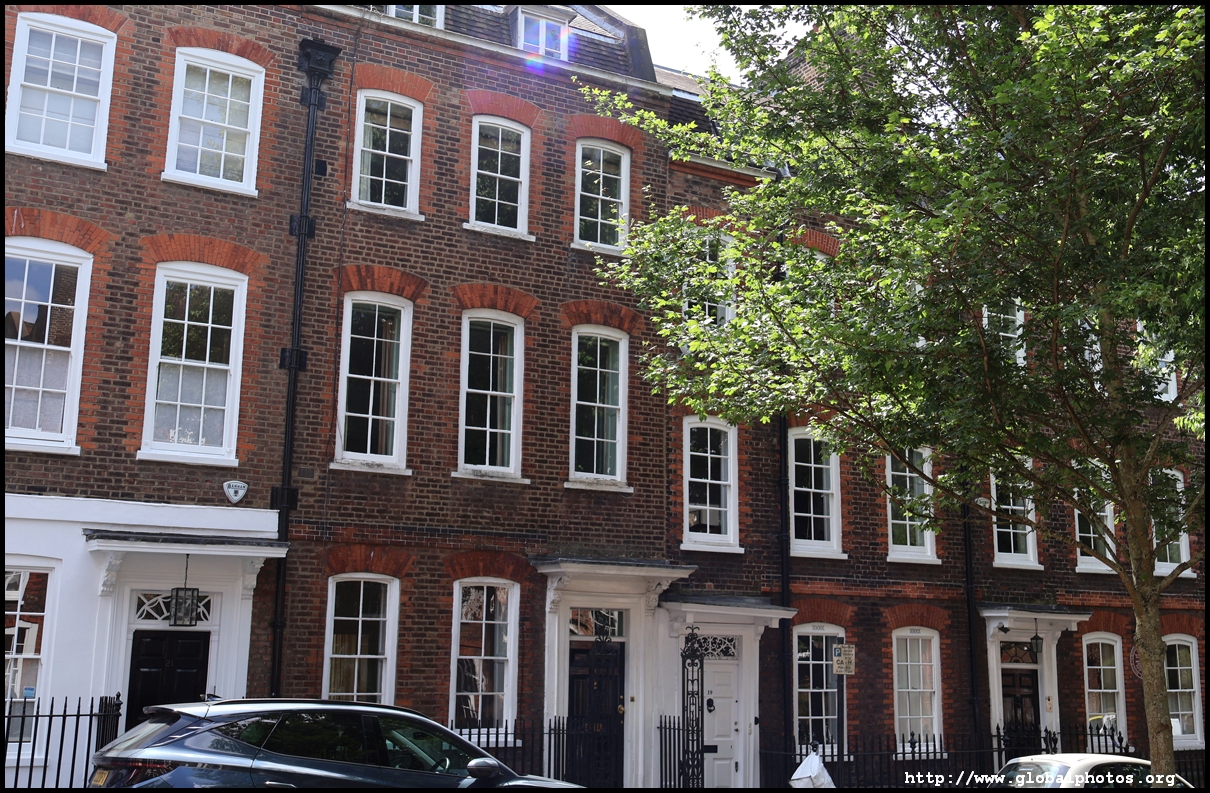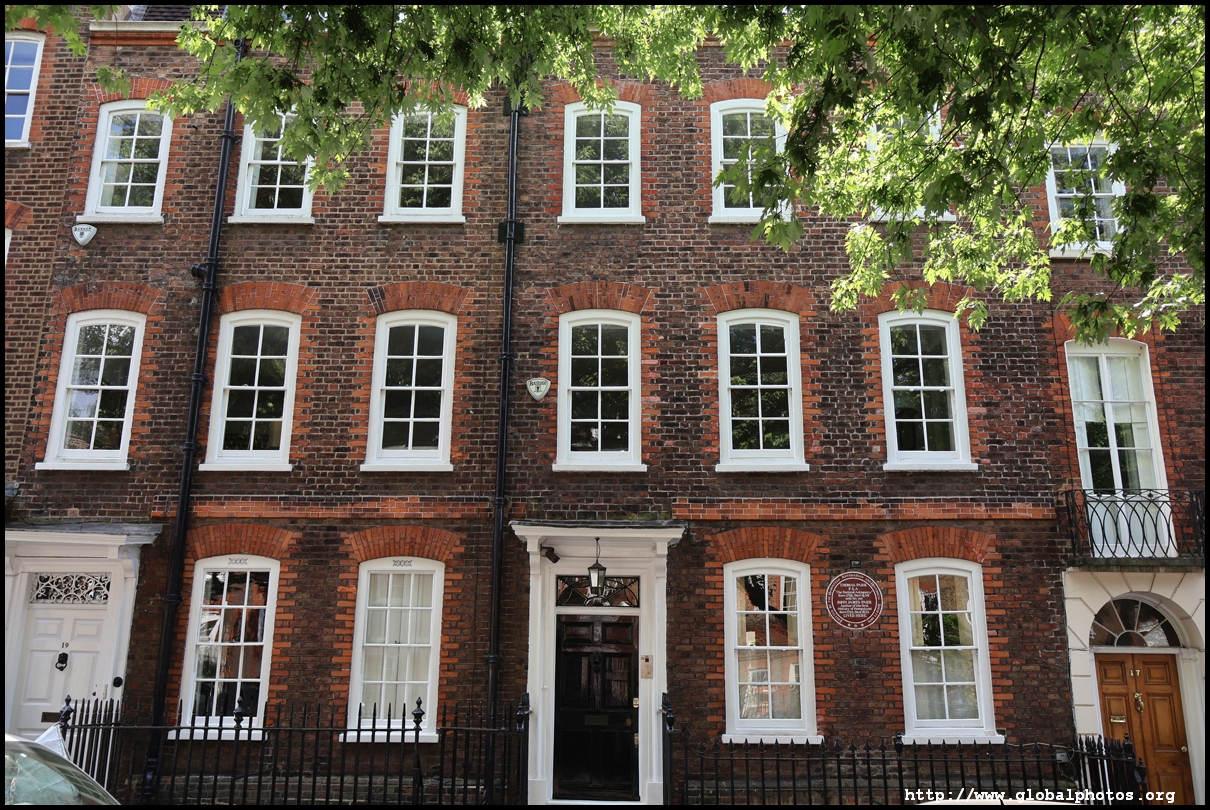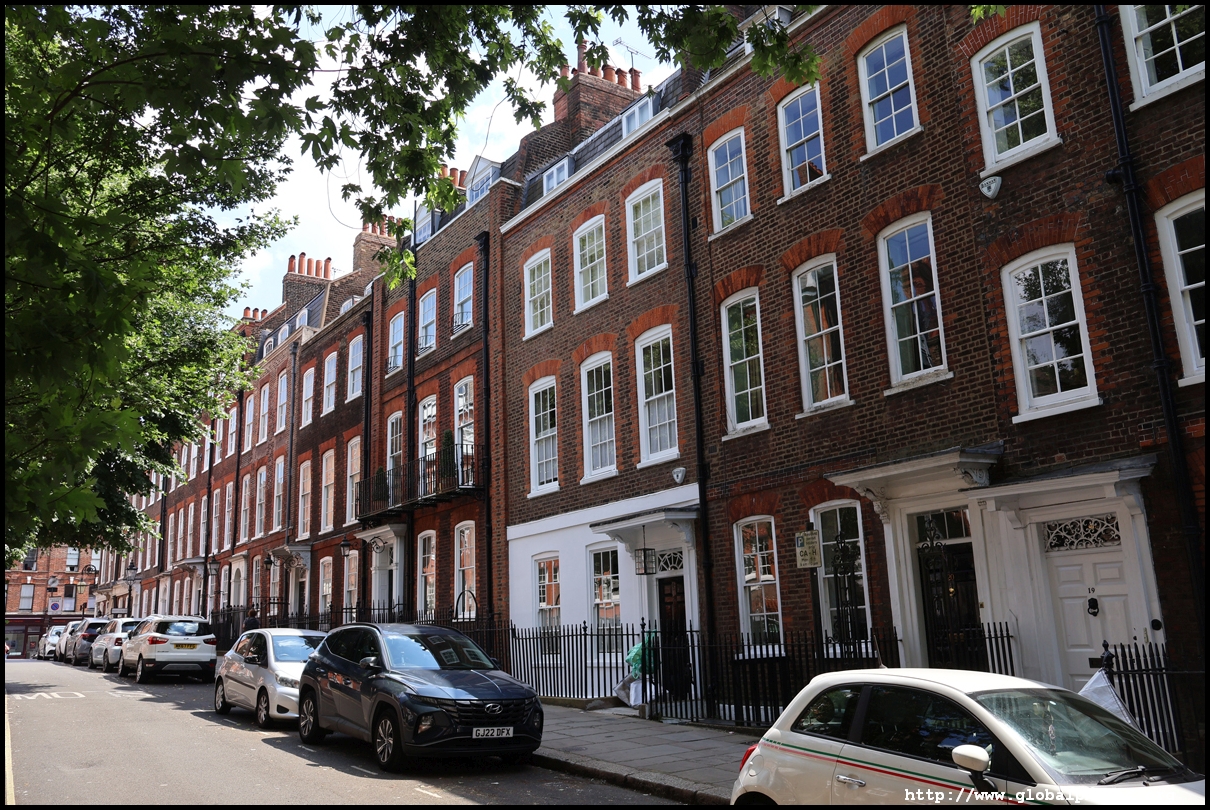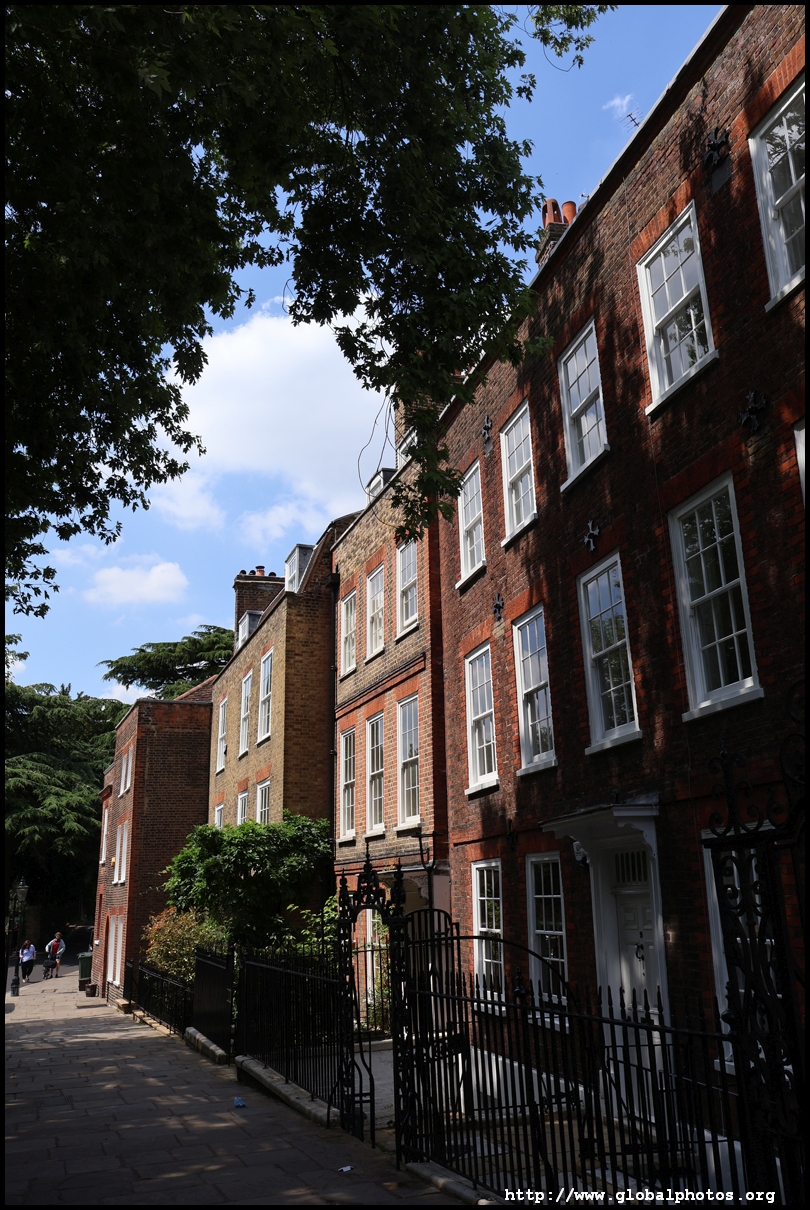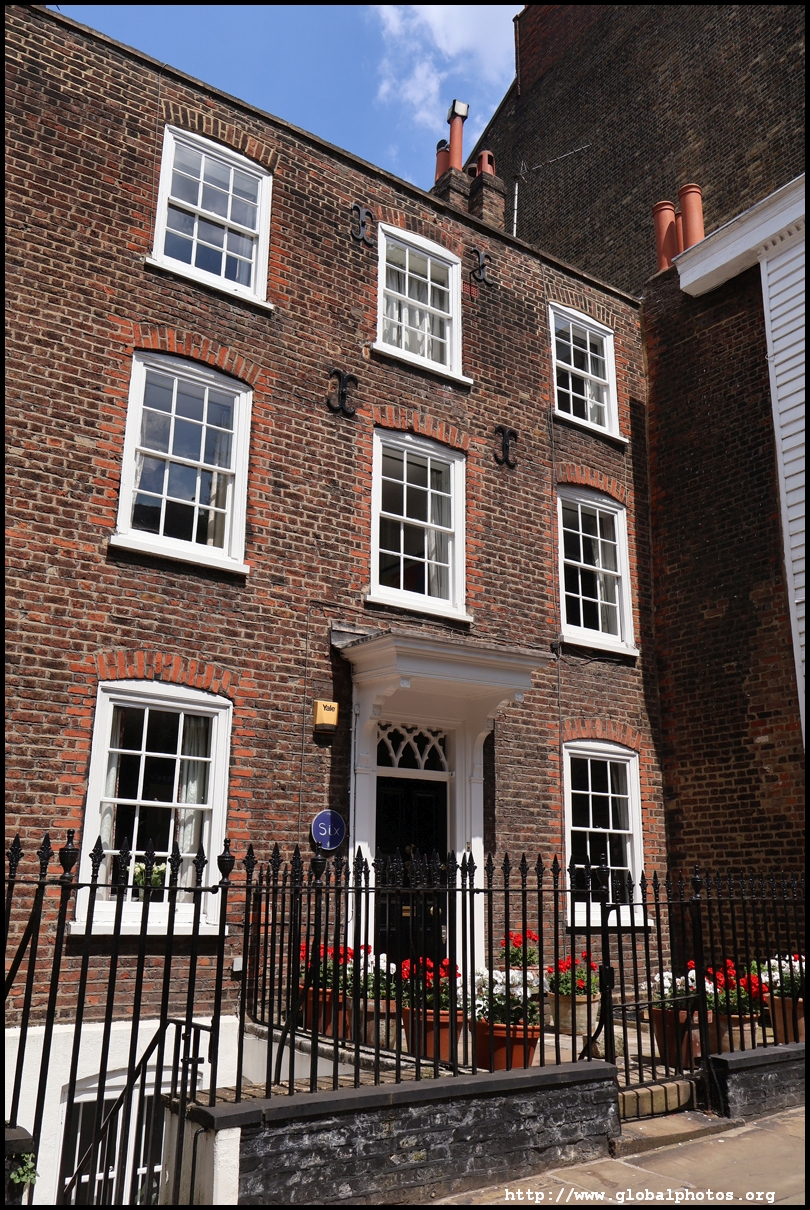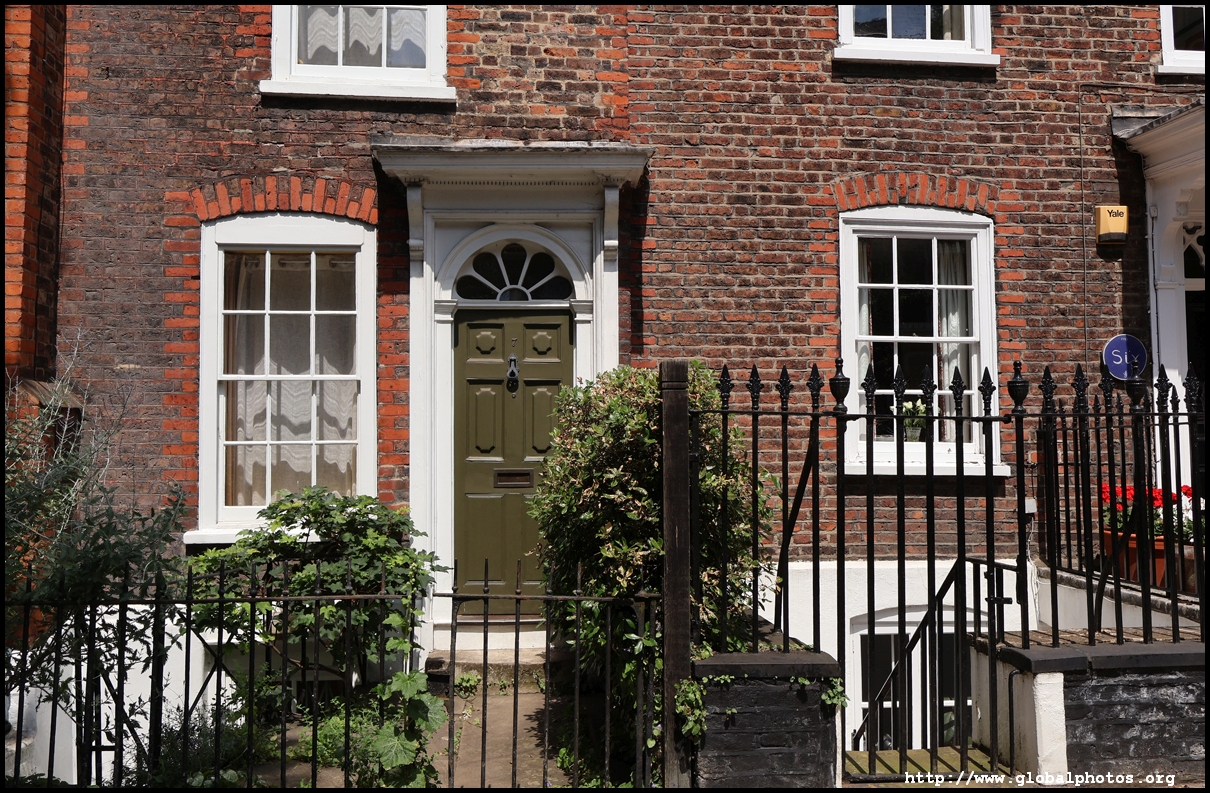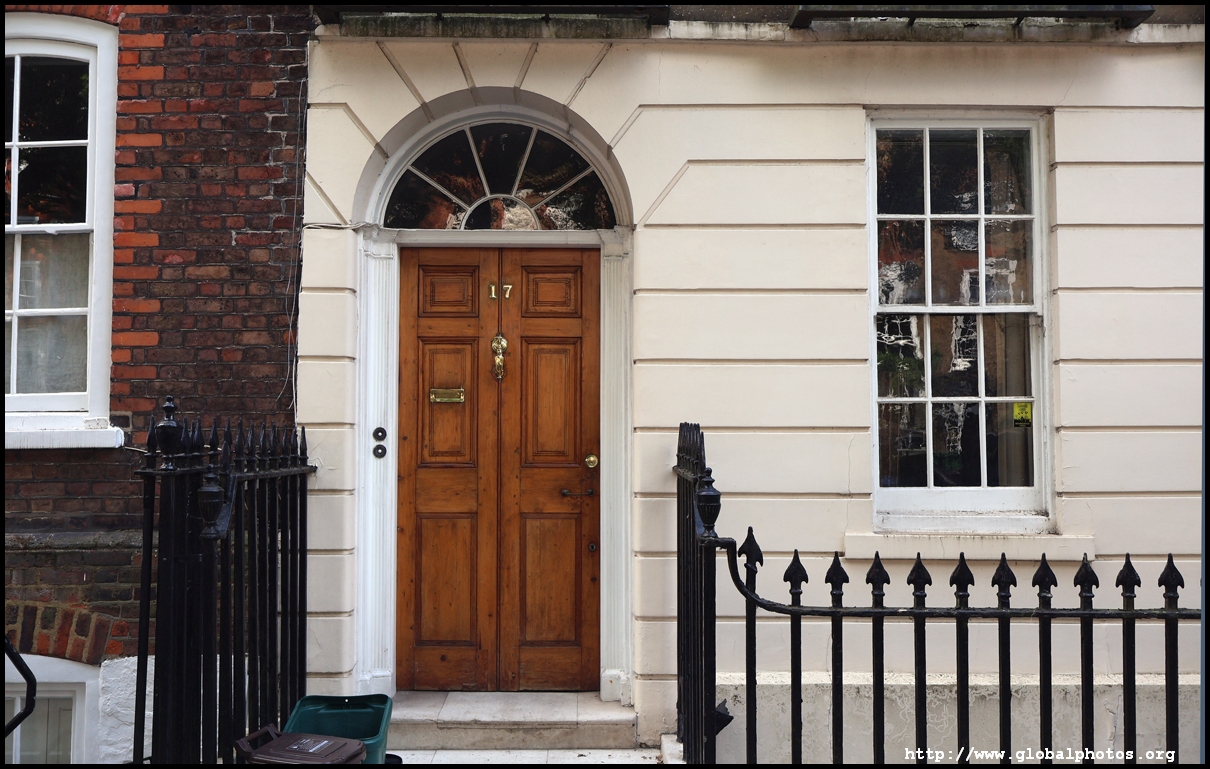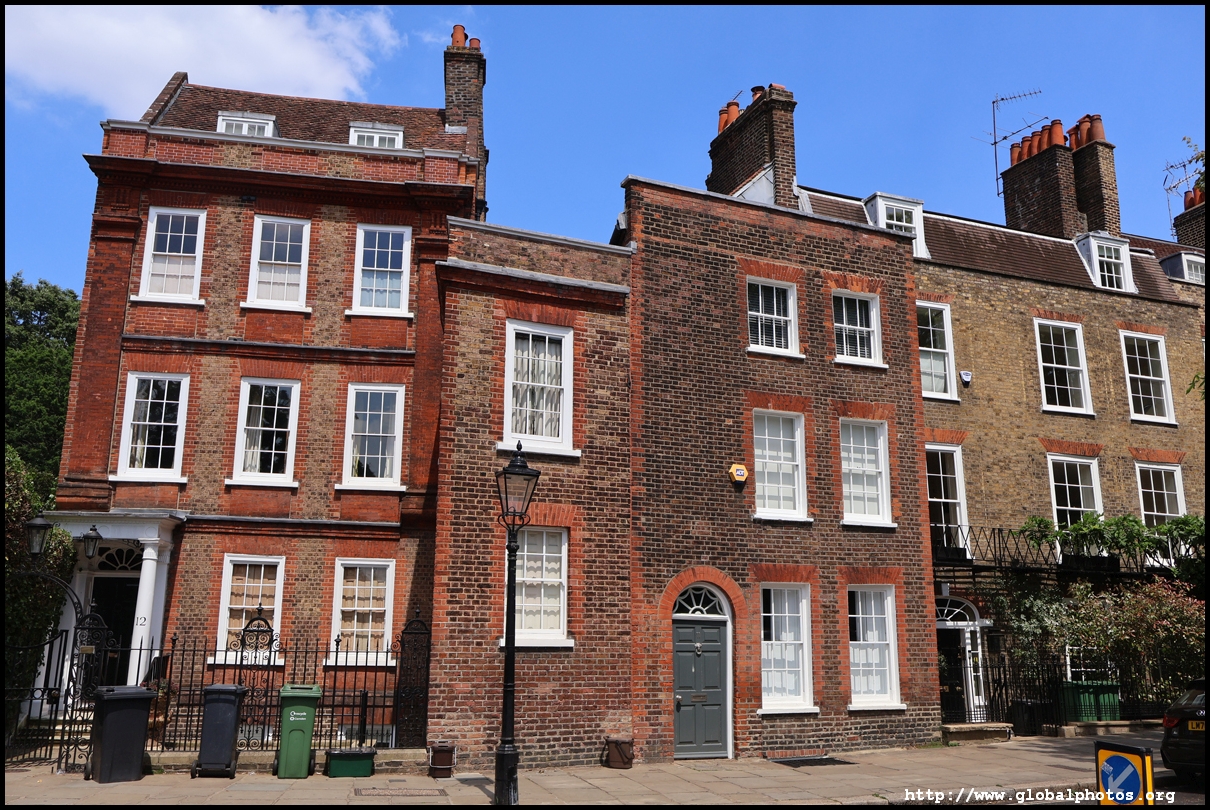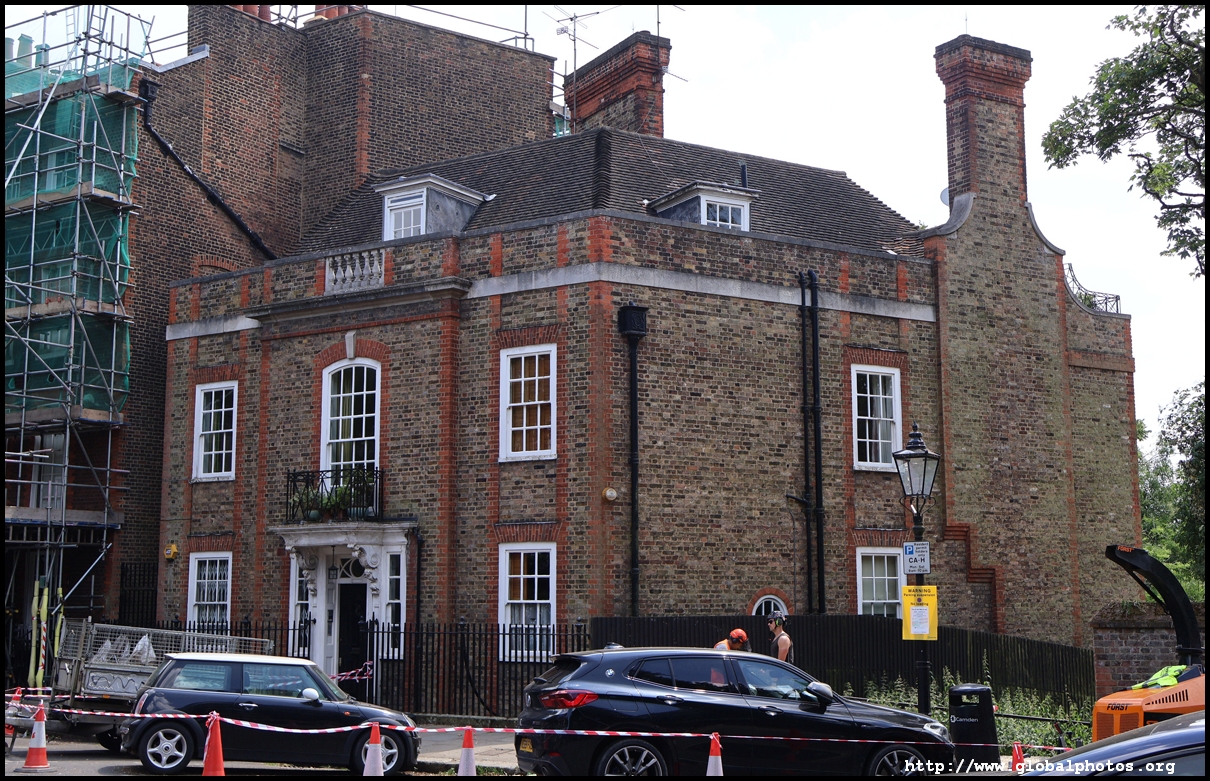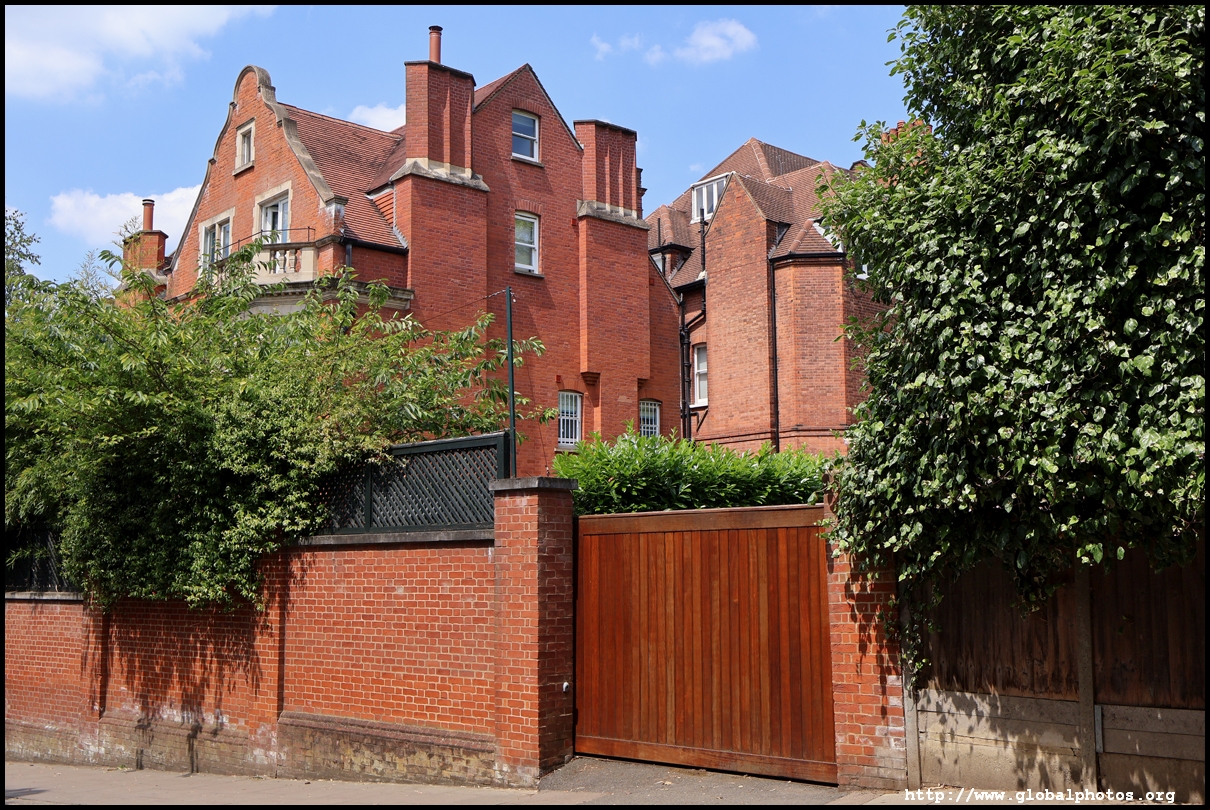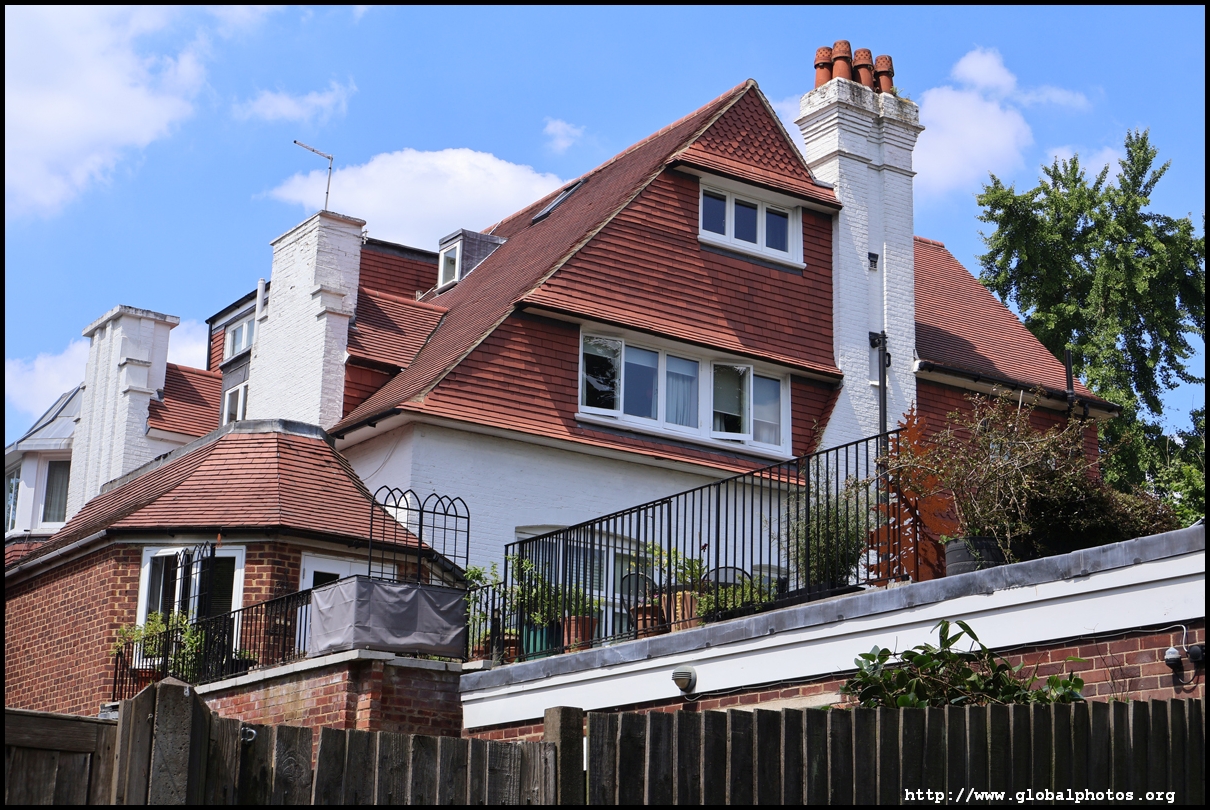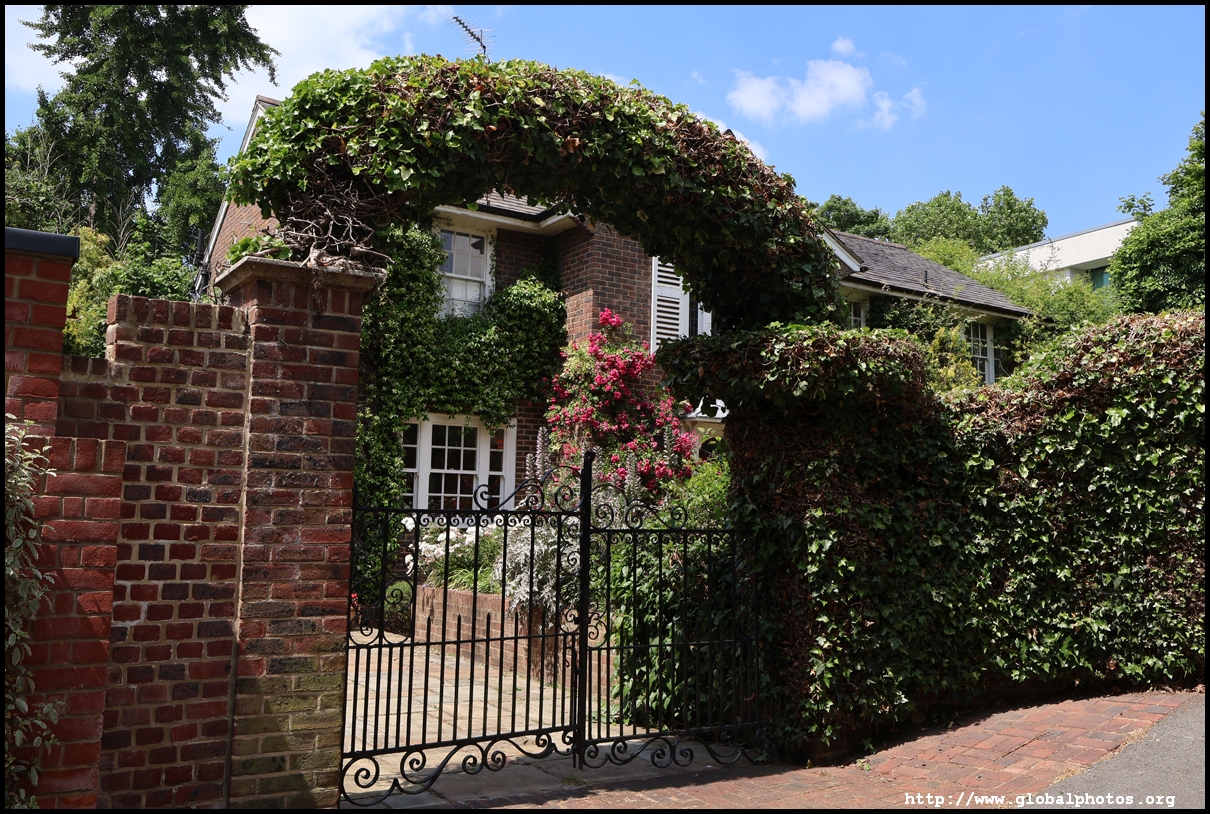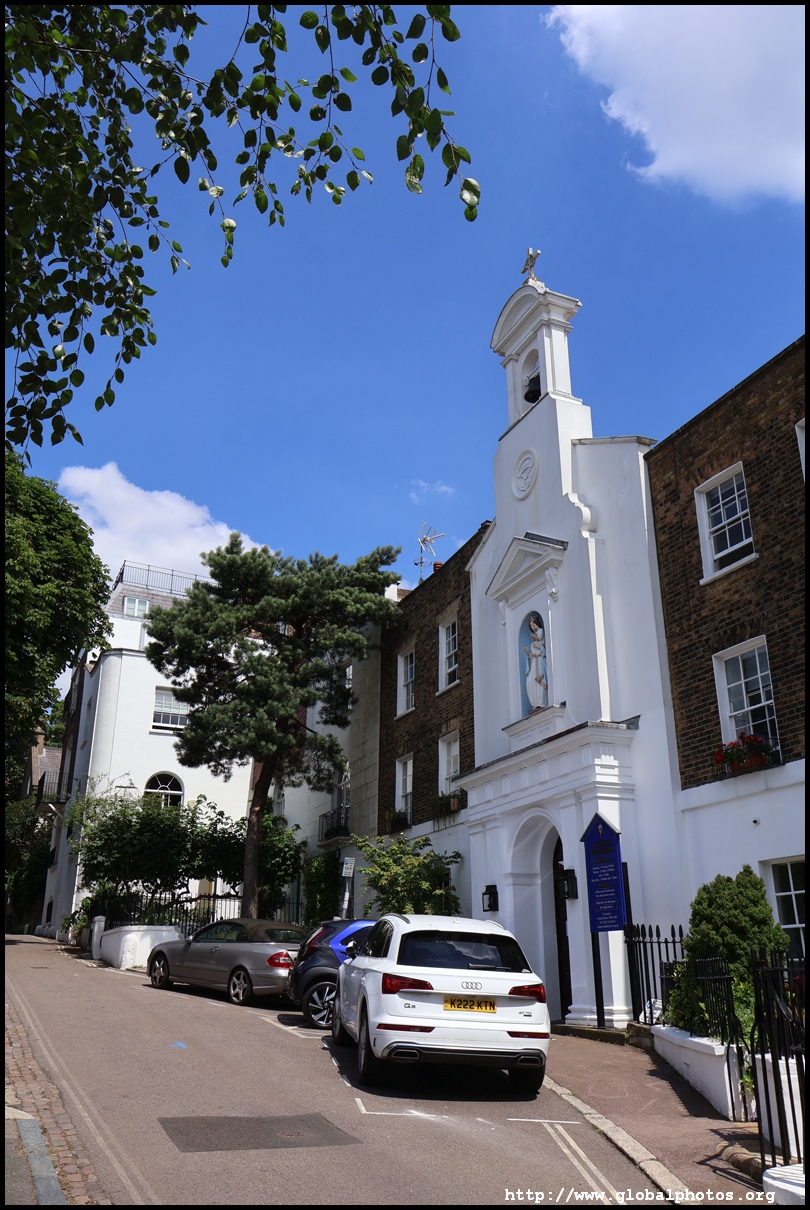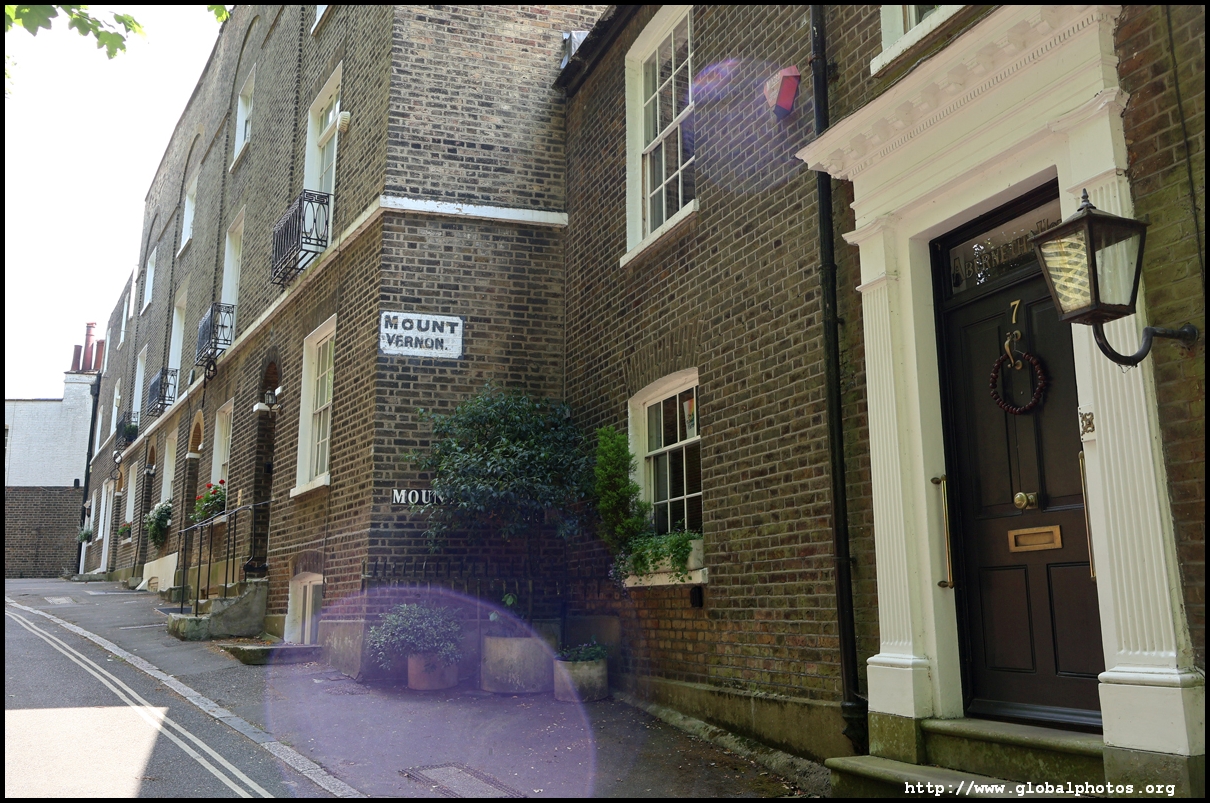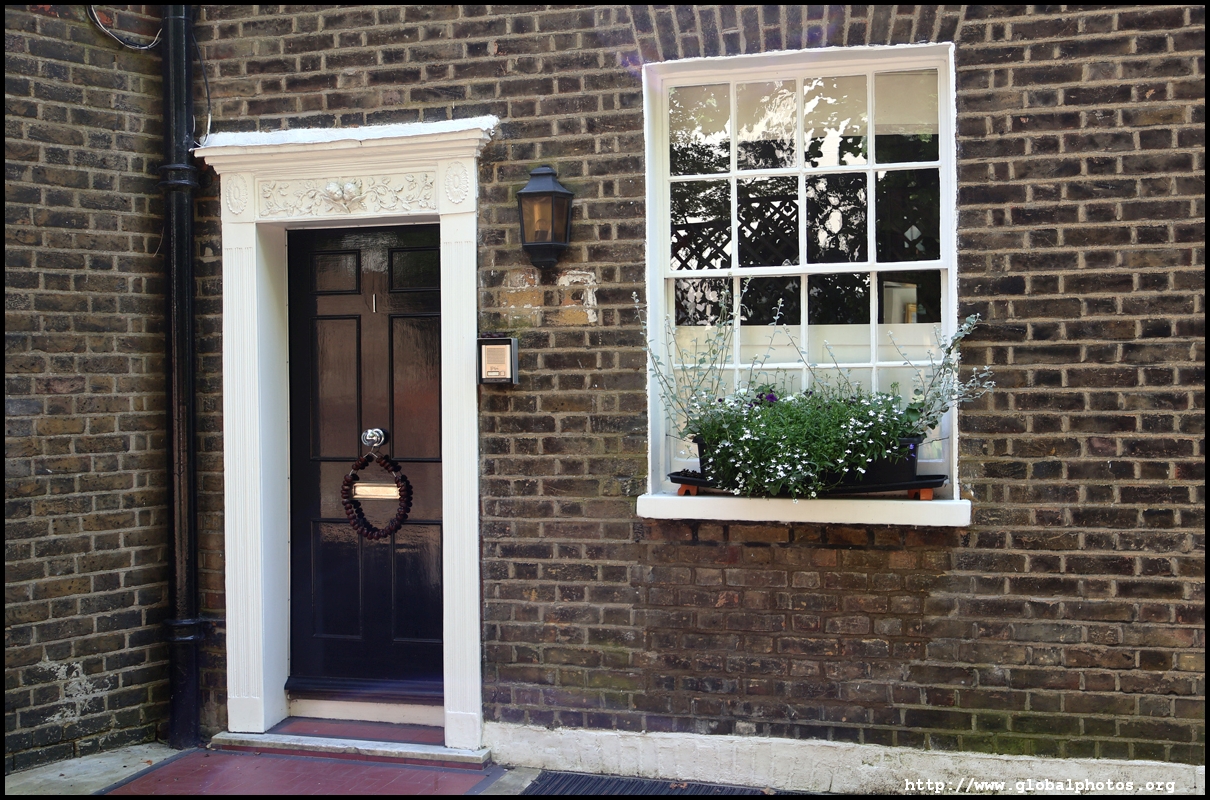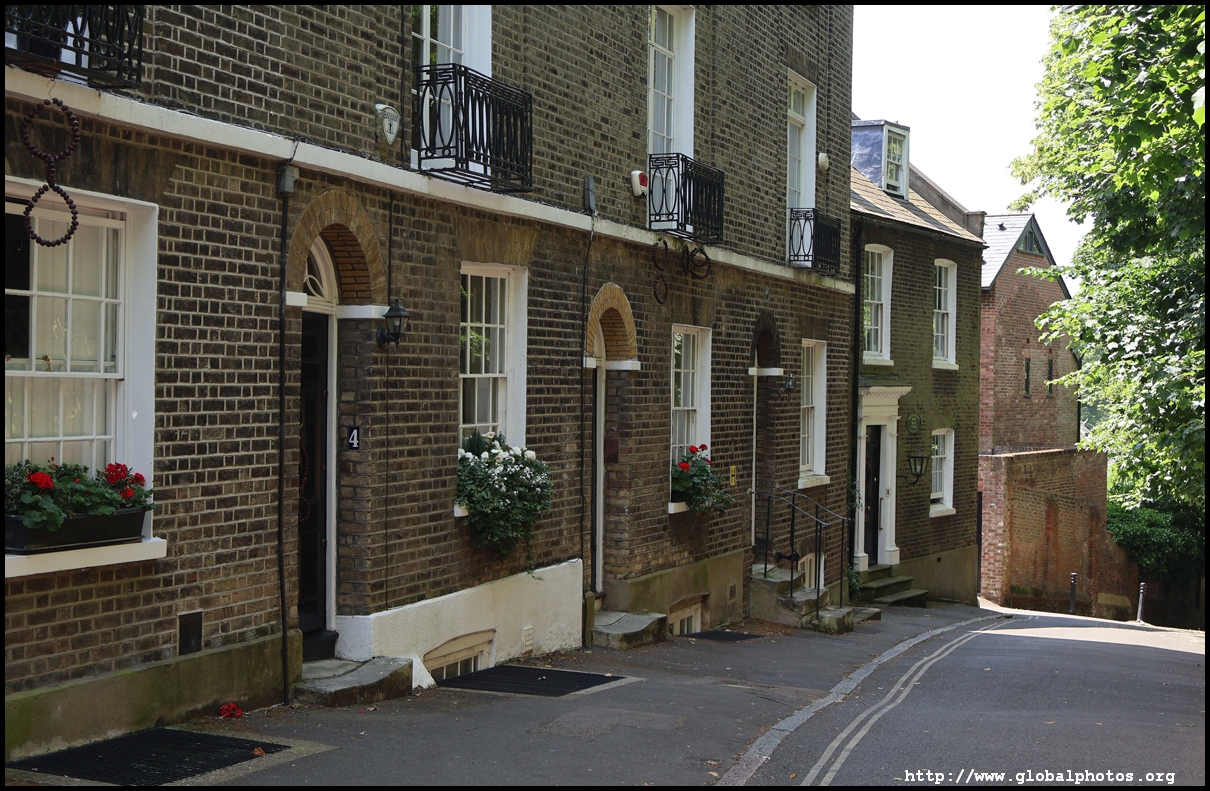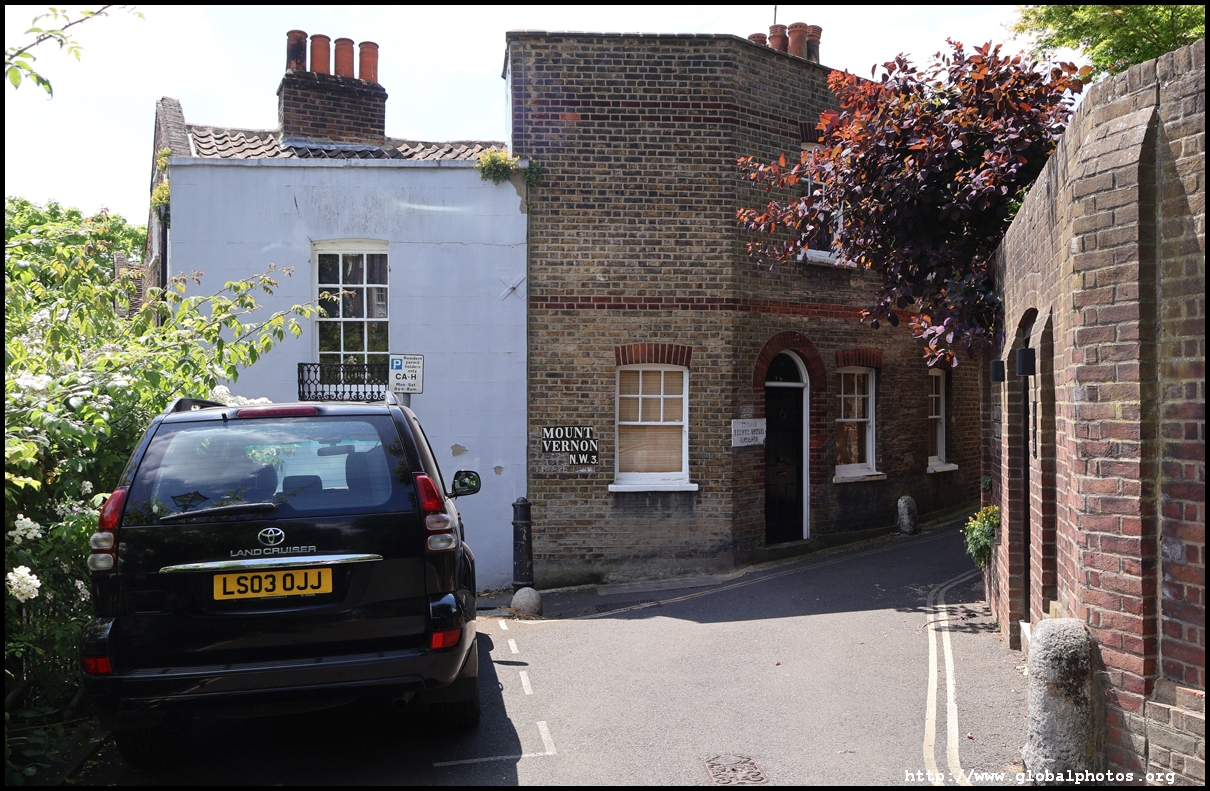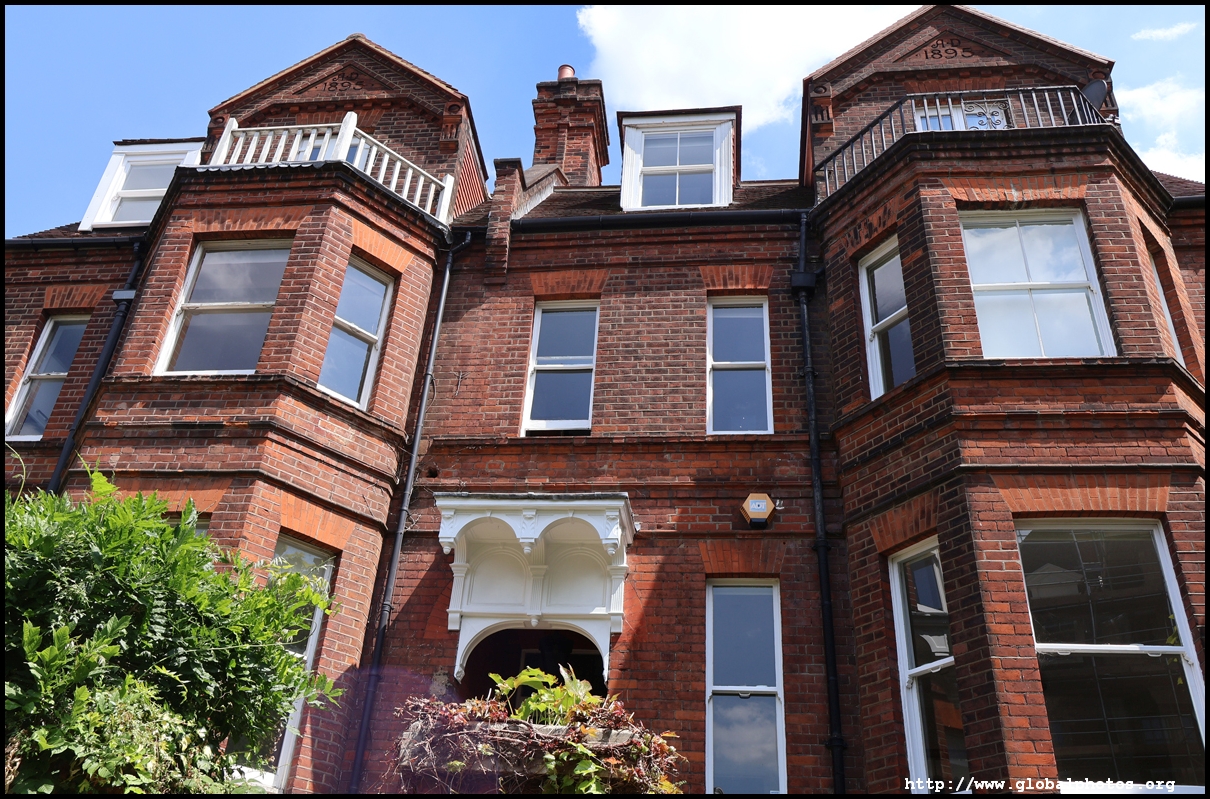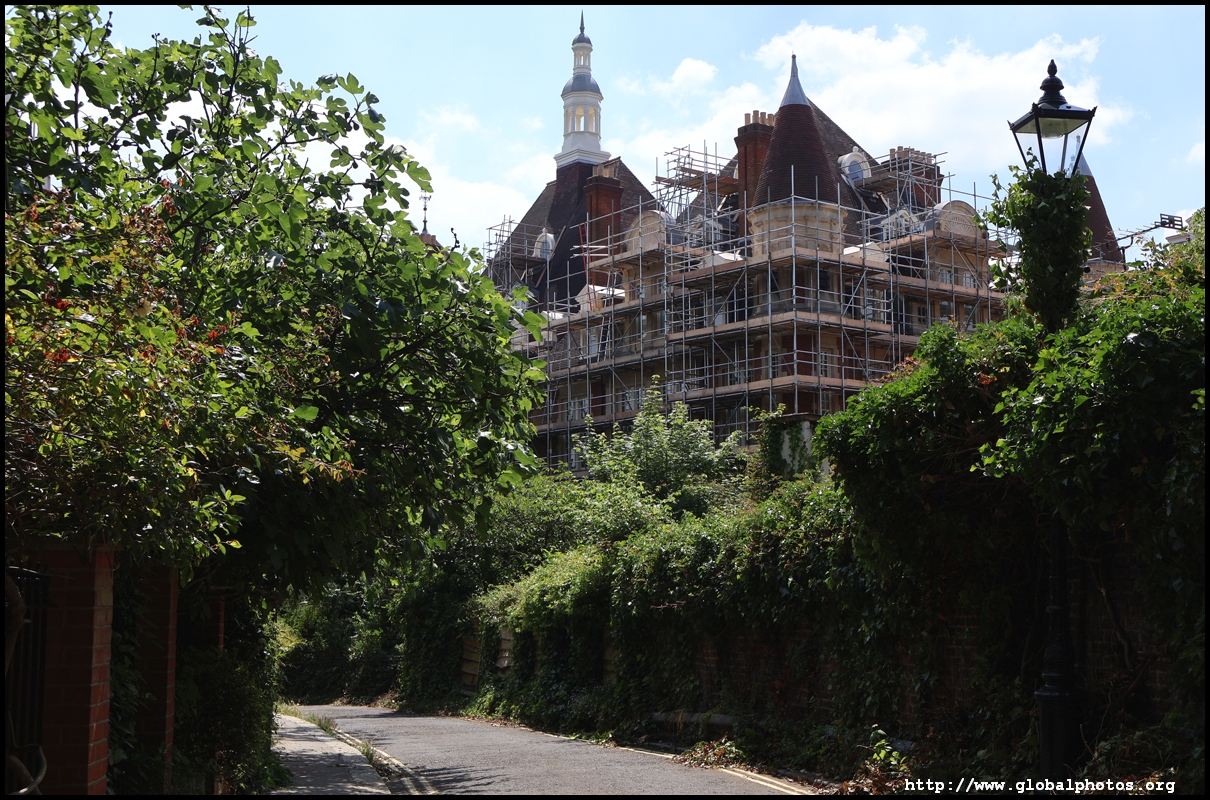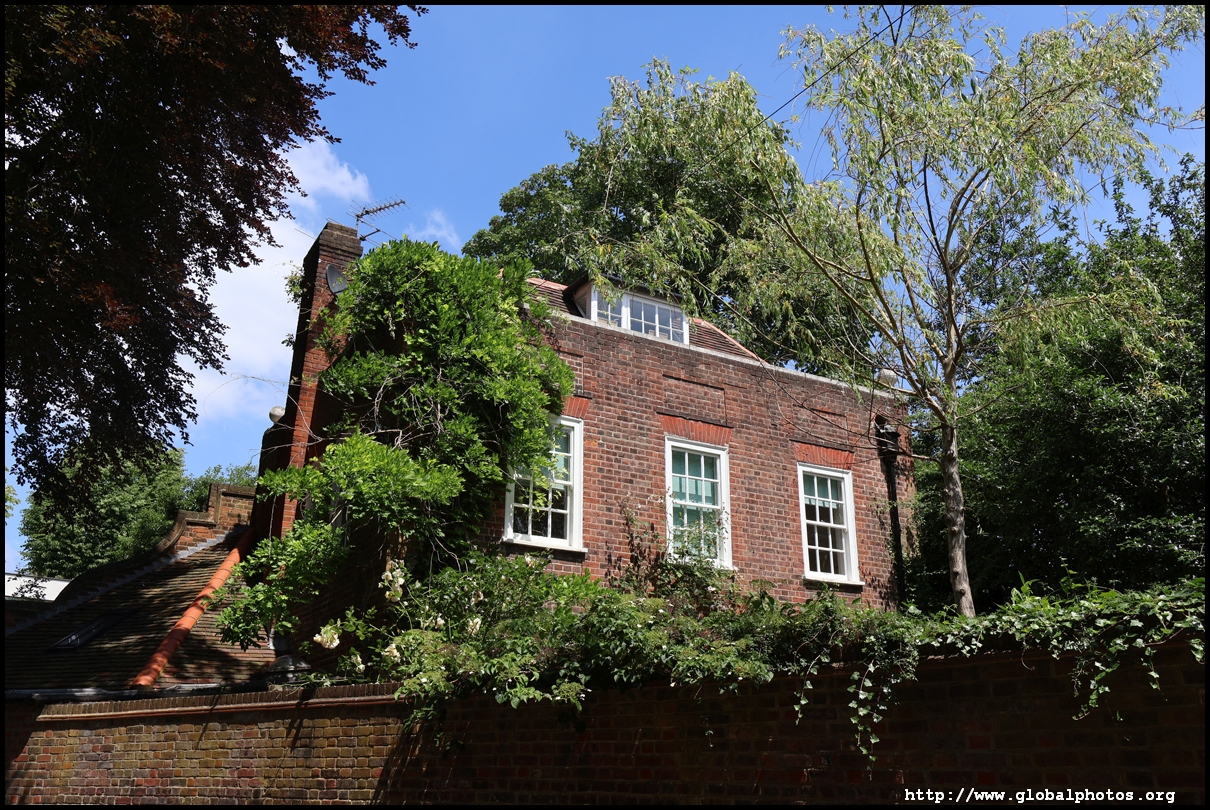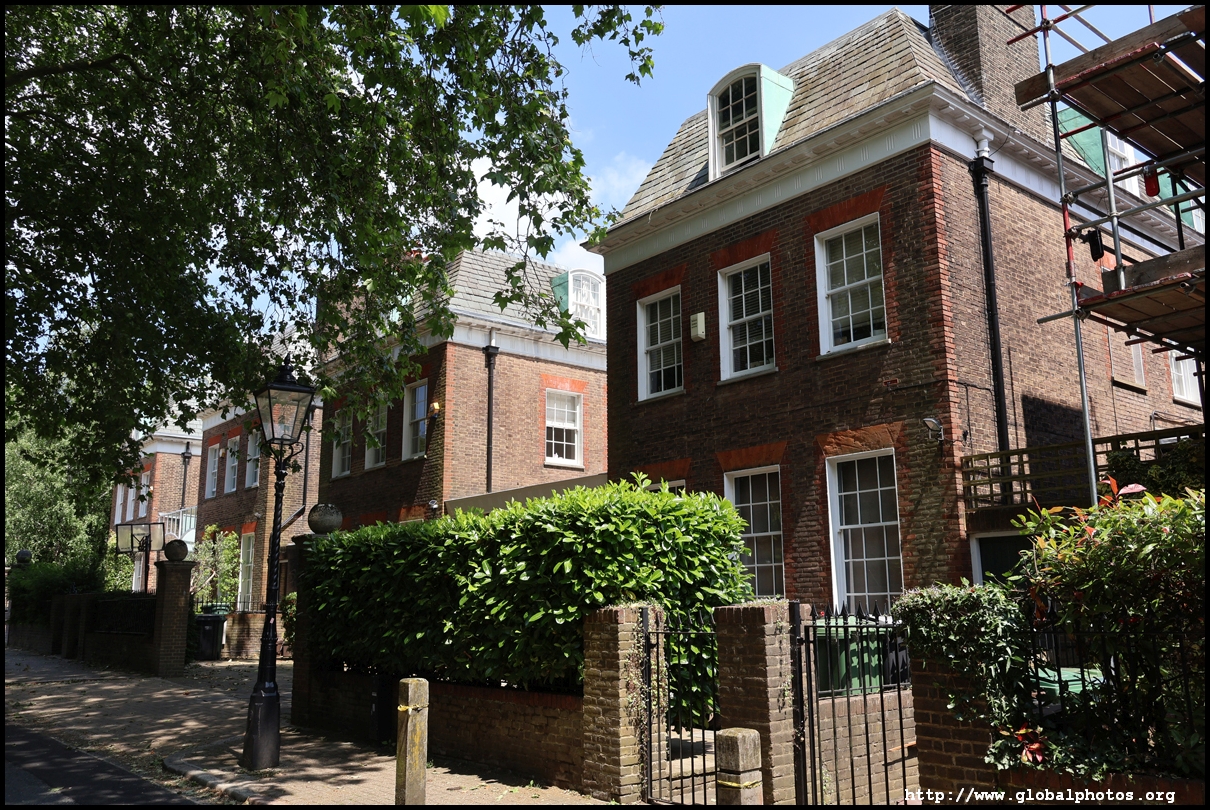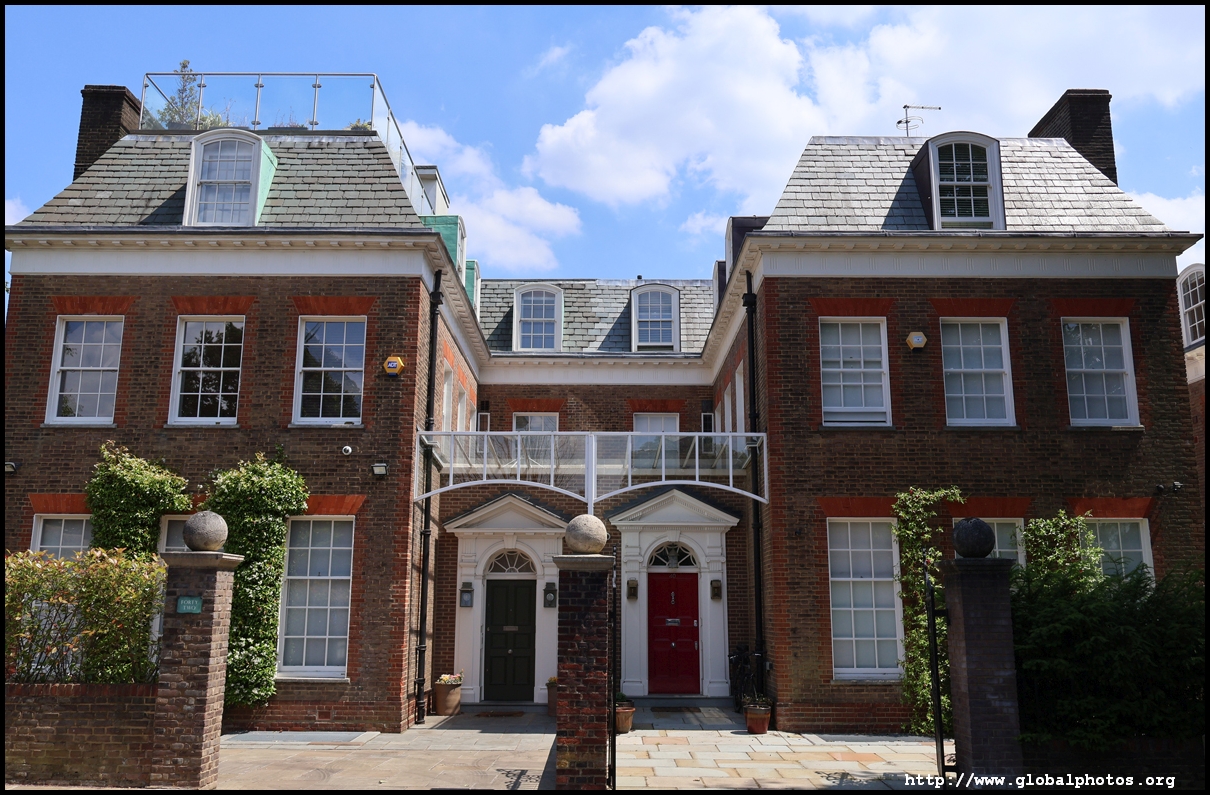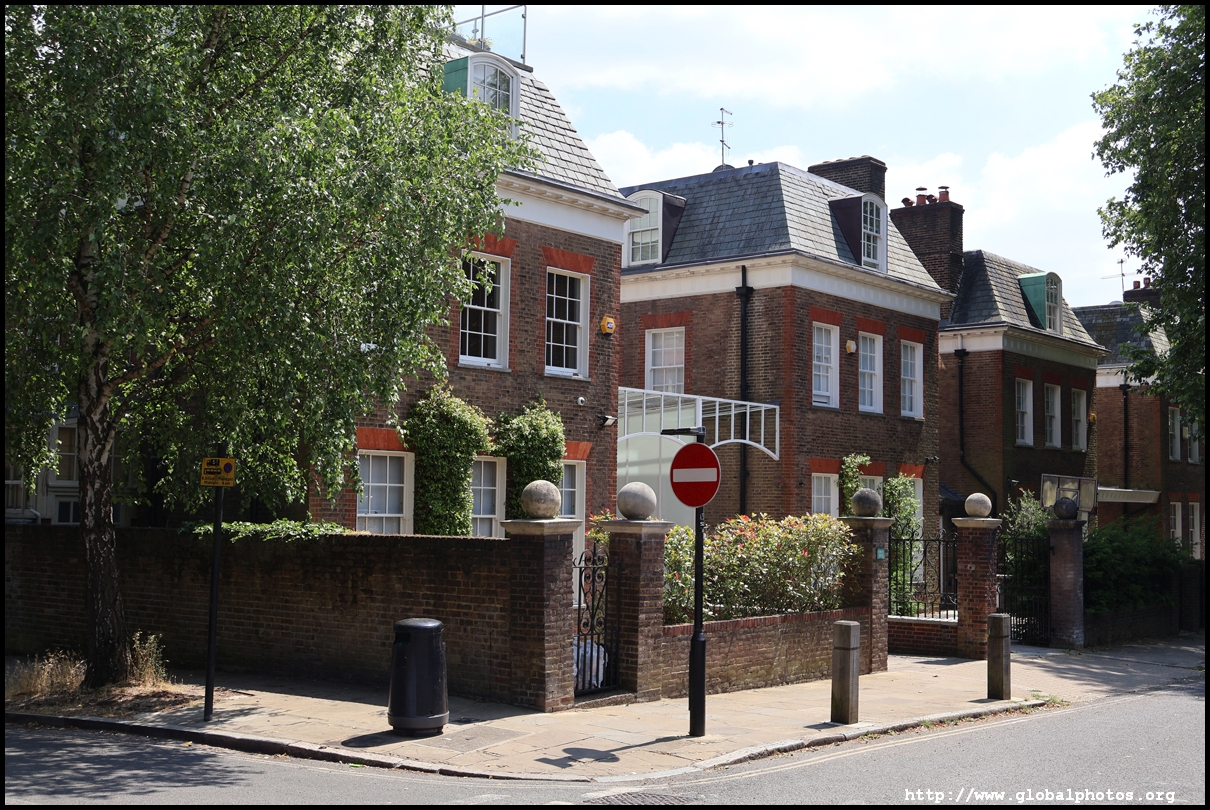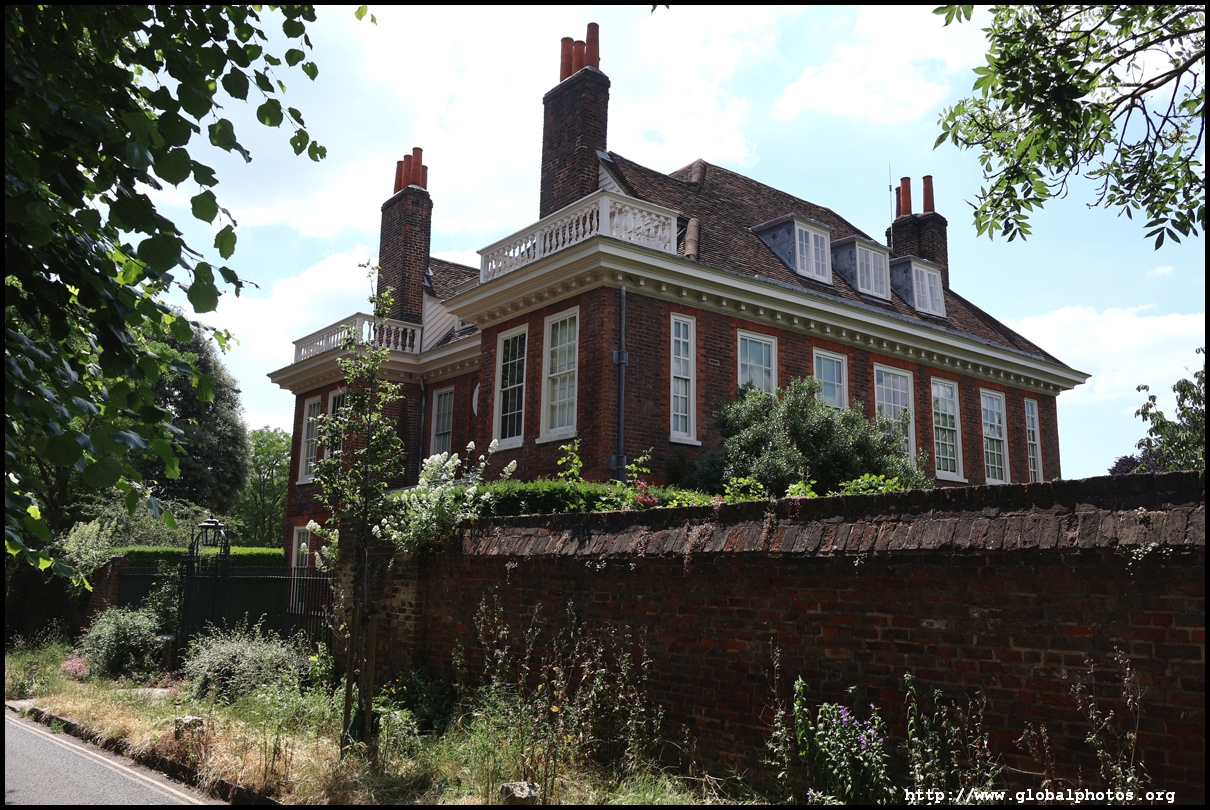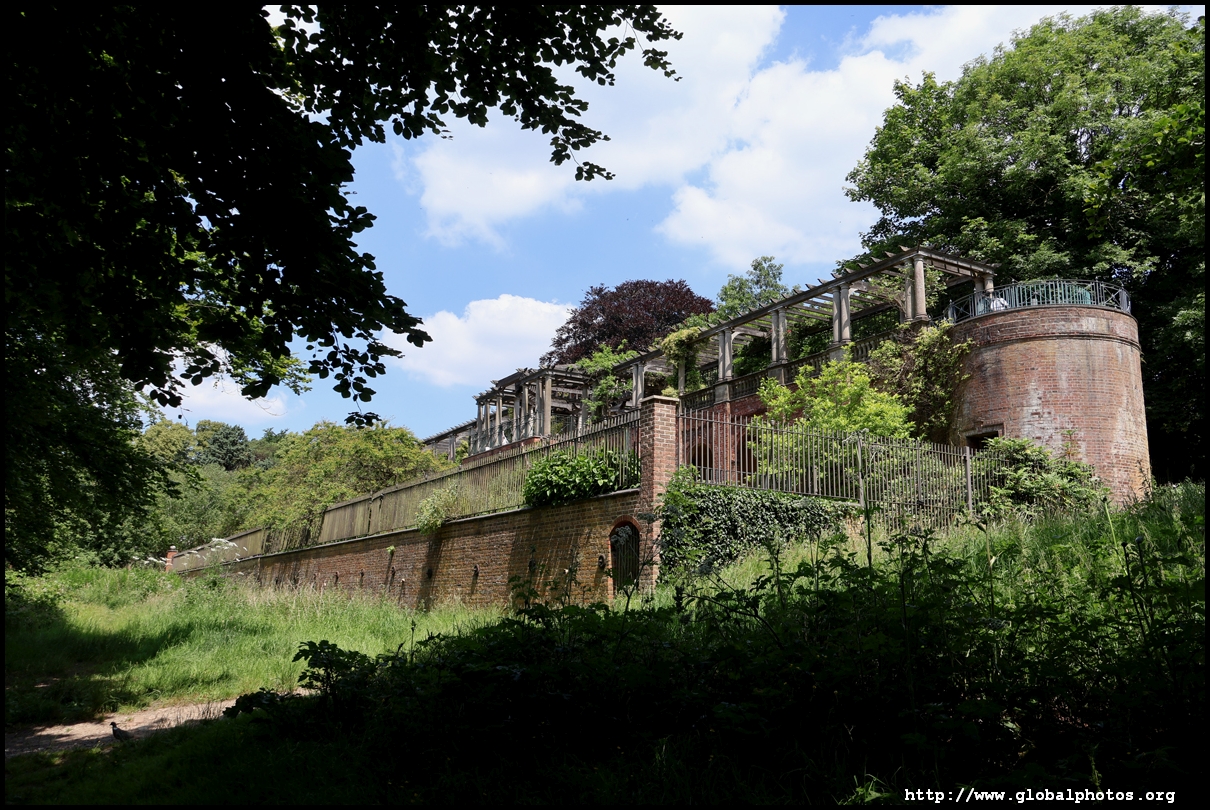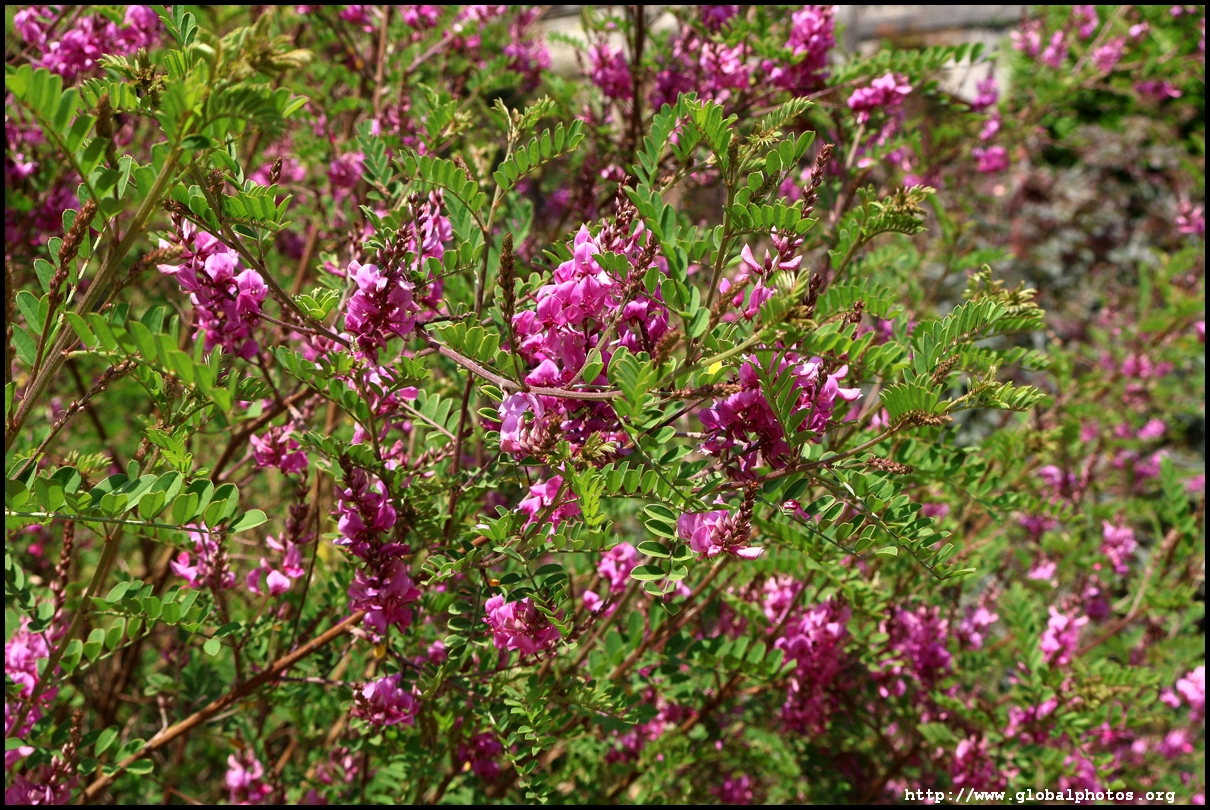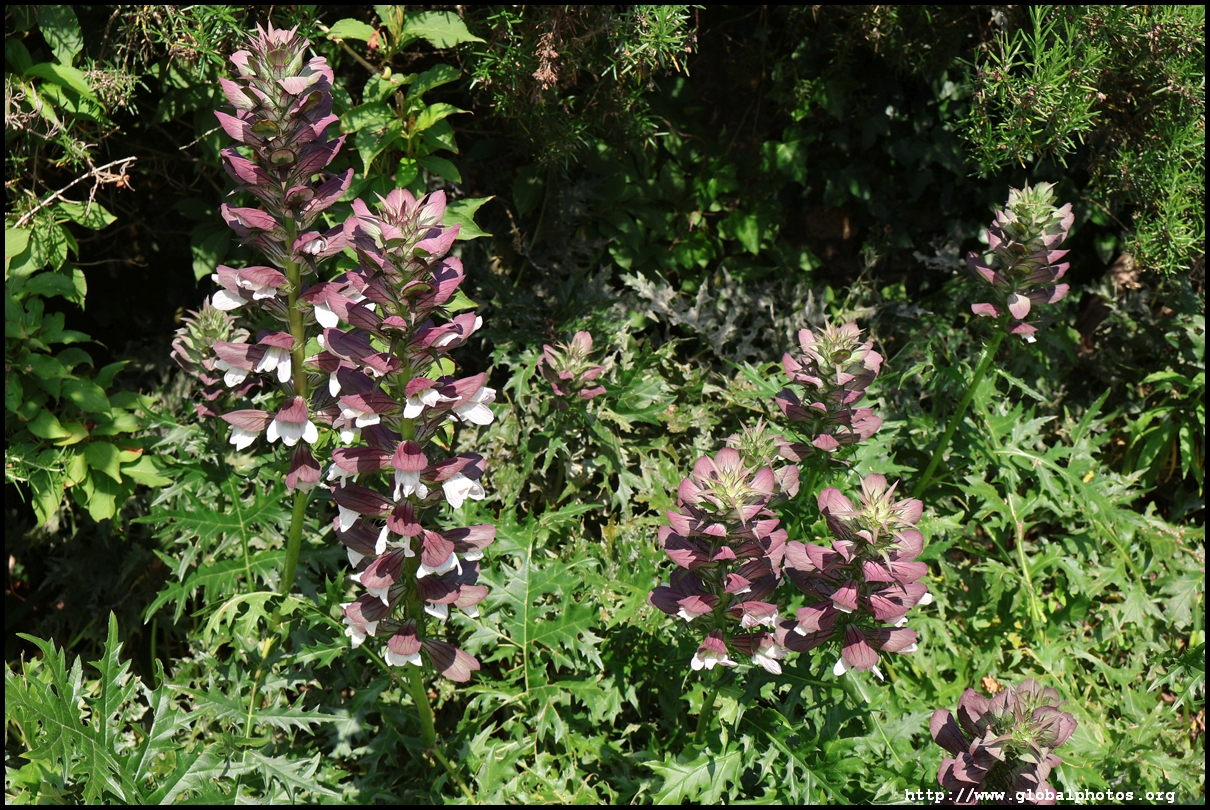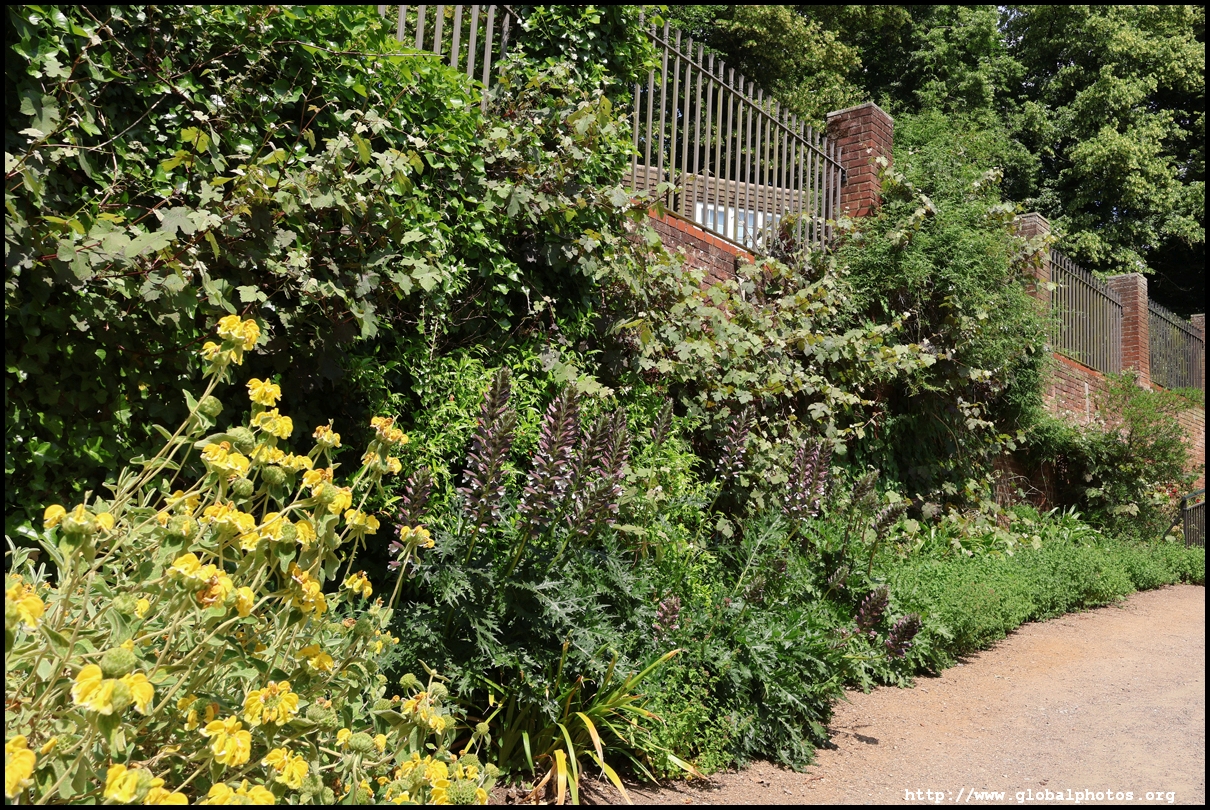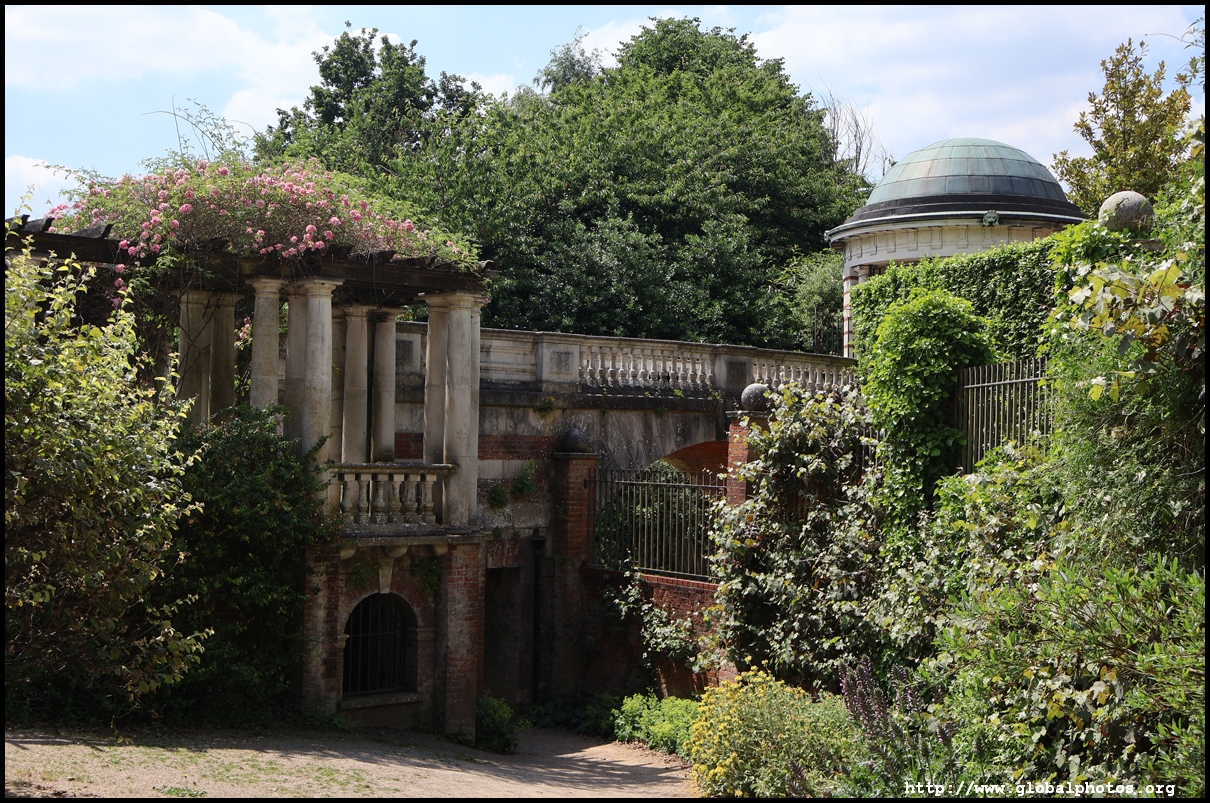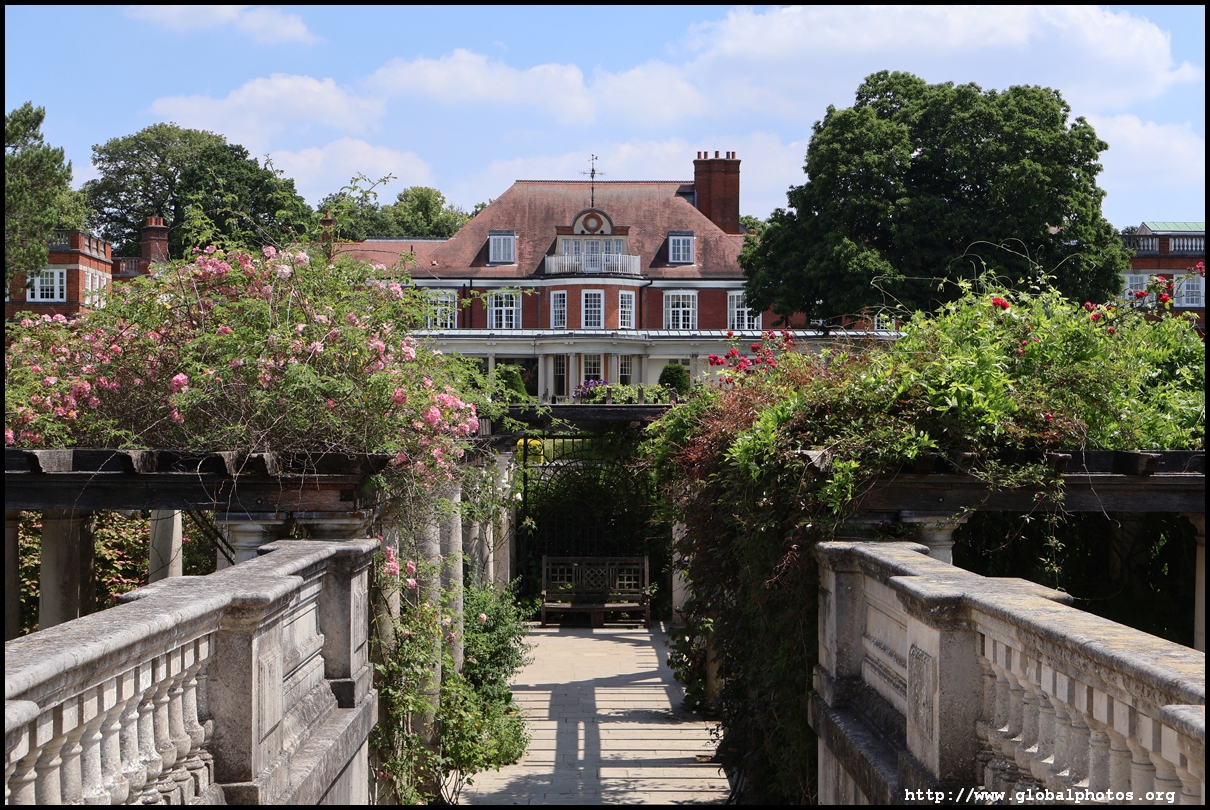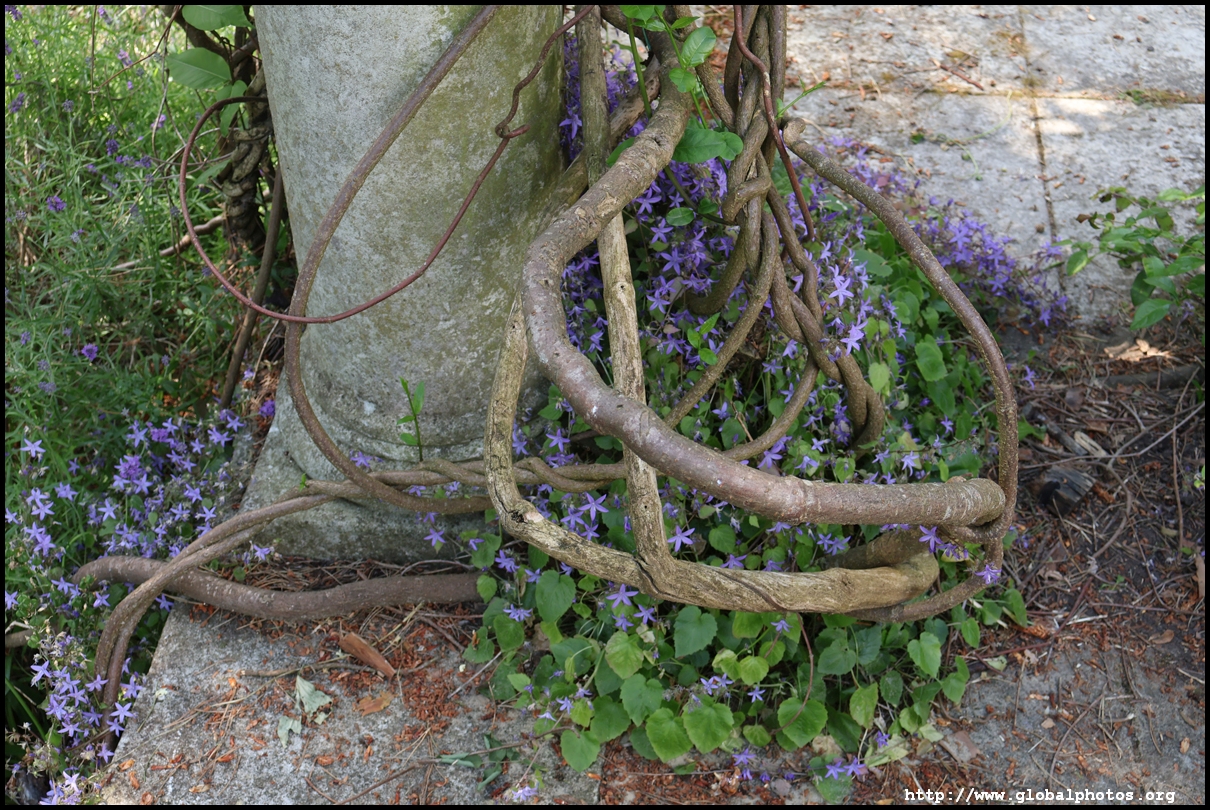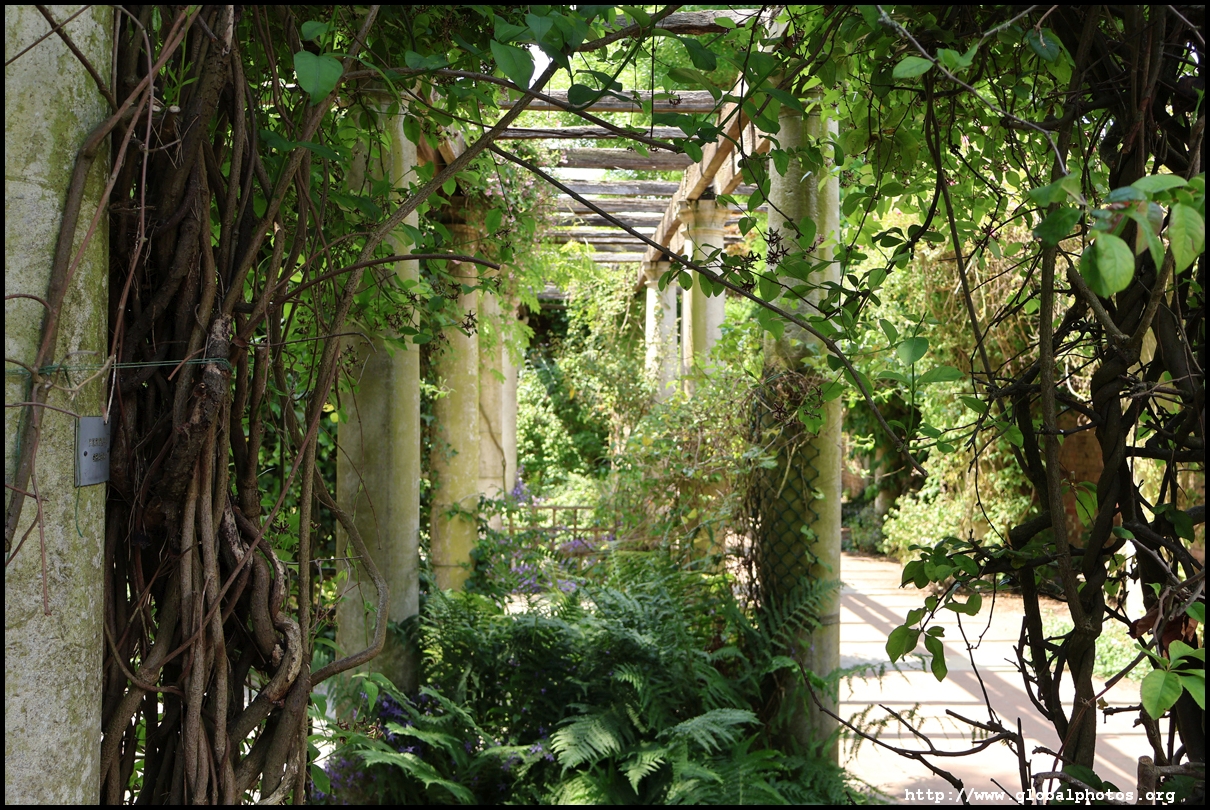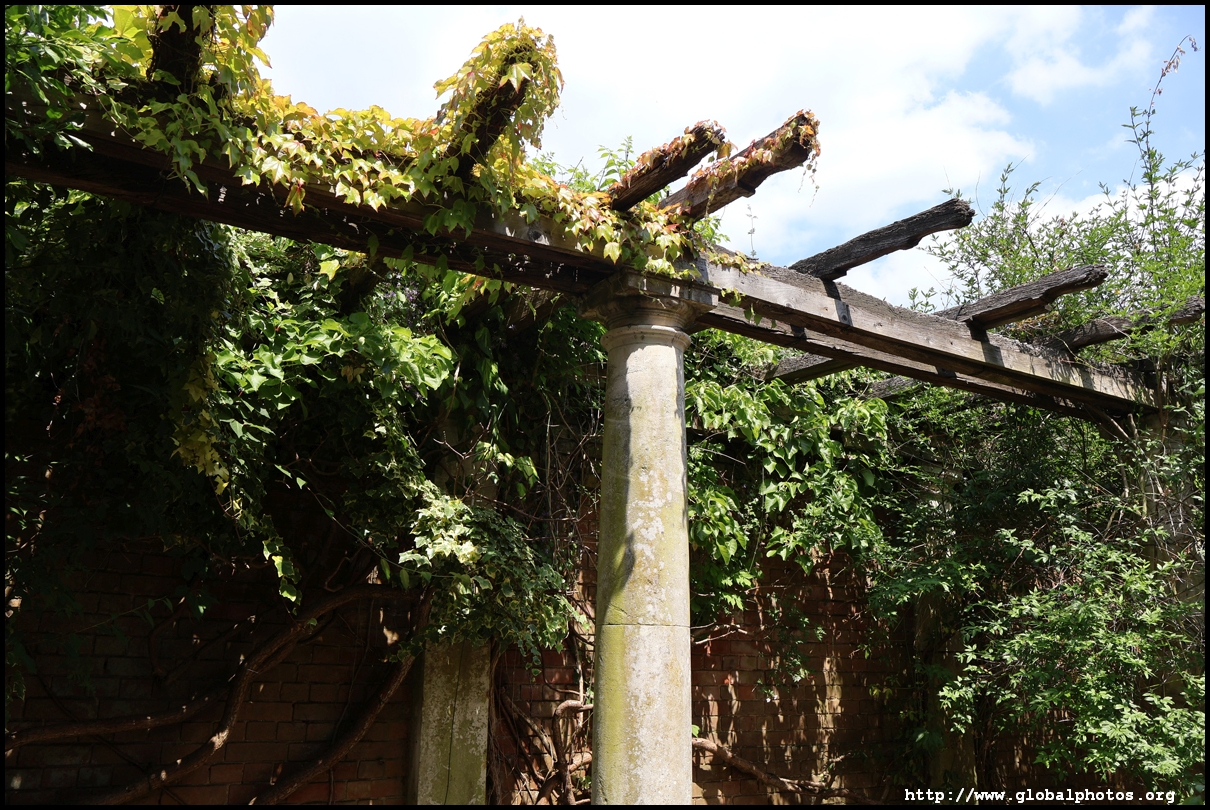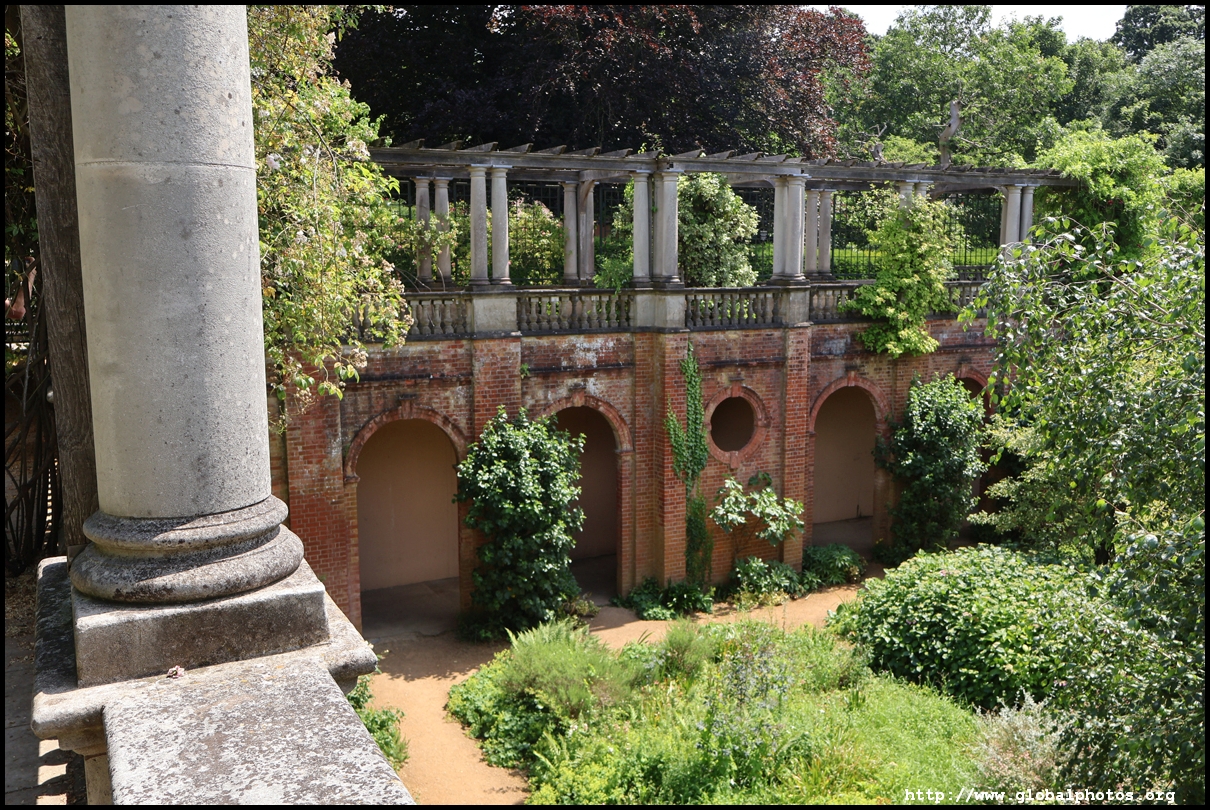London Photo Gallery - Hampstead Part 2
Hampstead became famous because of its medicinal springs and became a spa town in the 18th century, eventually attracting Londoners who wanted to escape the city's pollution and crowds. Views are also quite nice as it's on a higher elevation overlooking the city, which is just 4 miles away.Heath Street is the major high street with shops and restaurants.
Hampstead's Tube station is the deepest on the network at 58.5m below street level and has the longest lift shaft since the area is built on top of a hill. A sign warns passengers who want to take the stairs that it's an equivalent 15 storey climb.
A handsome set of Georgian houses greets you as you walk along Church Row.
This west side of the high street is also full of nice historic homes. Hampstead is home to many rich and famous, such as writer Robert Louis Stevenson.
The Admiral's House was built in the early 18th century for Charles Keys. From around 1775 to 1811, a former naval captain, Fountain North, moved in and added a roof shaped like a quarter deck to symbolize his aspirations to become an admiral.
A set of handsome houses line nearby Hampstead Grove.
Fenton House was built in 1686 for a merchant and is now furnished with plenty of porcelain, Georgian furniture, and needlework. Now managed by the National Trust, it is one of the oldest houses in the area.
A further walk away from the main town and into more forested areas, the Hill Garden and Pergola was commissioned by Lord Leverhulme in 1904 to host outdoor parties. It is beautifully landscaped and managed by the city today.
|
To re-use these photos, please notify me by email : asiaglobe@yahoo.com.hk.
